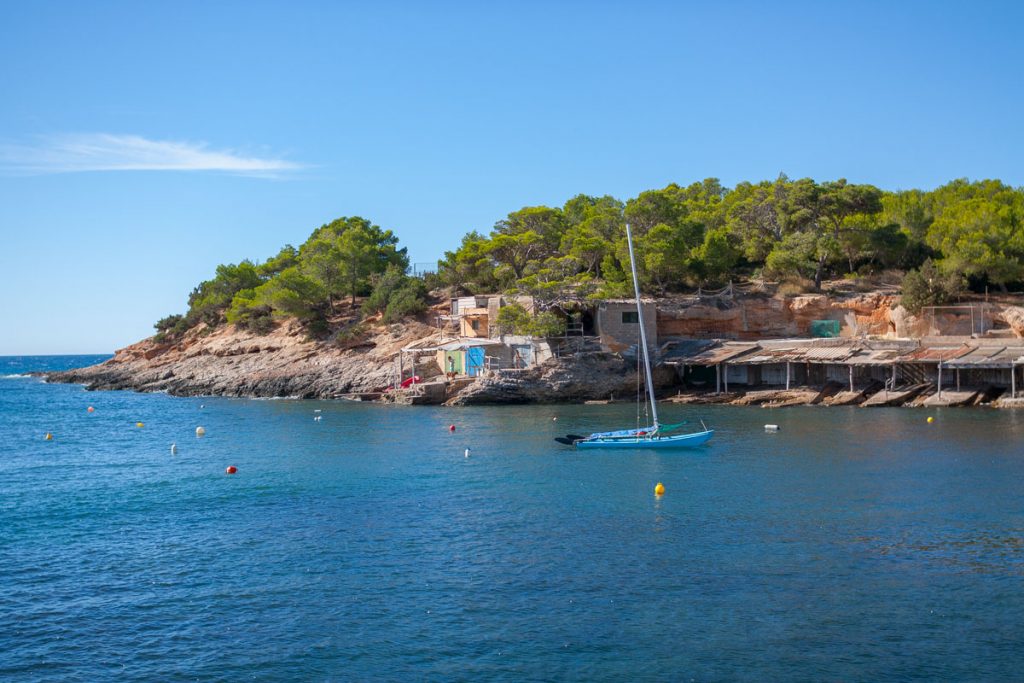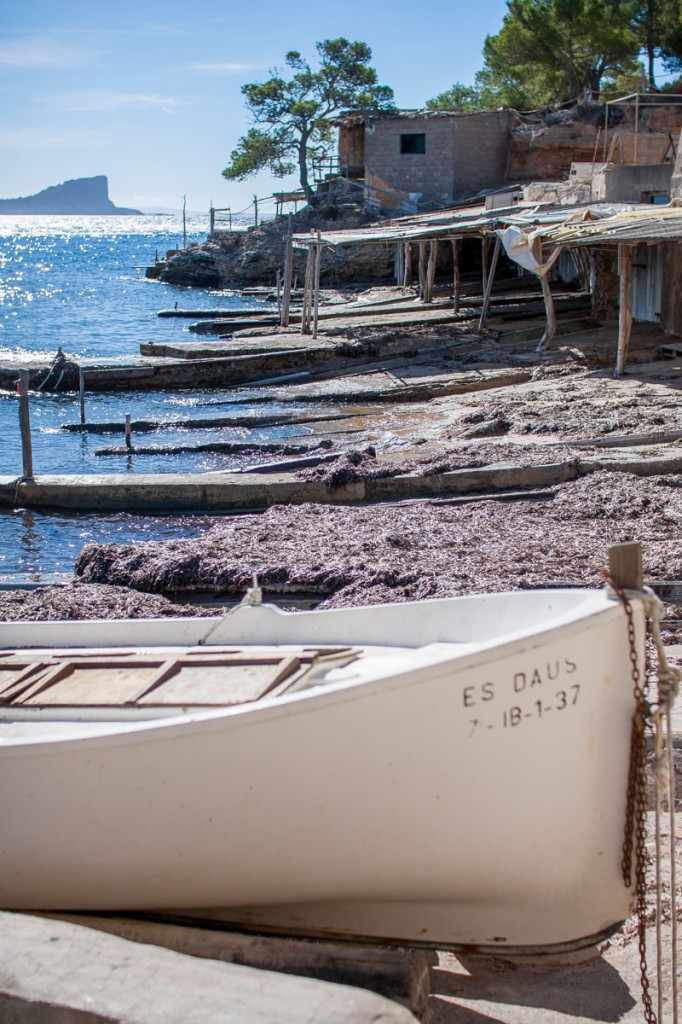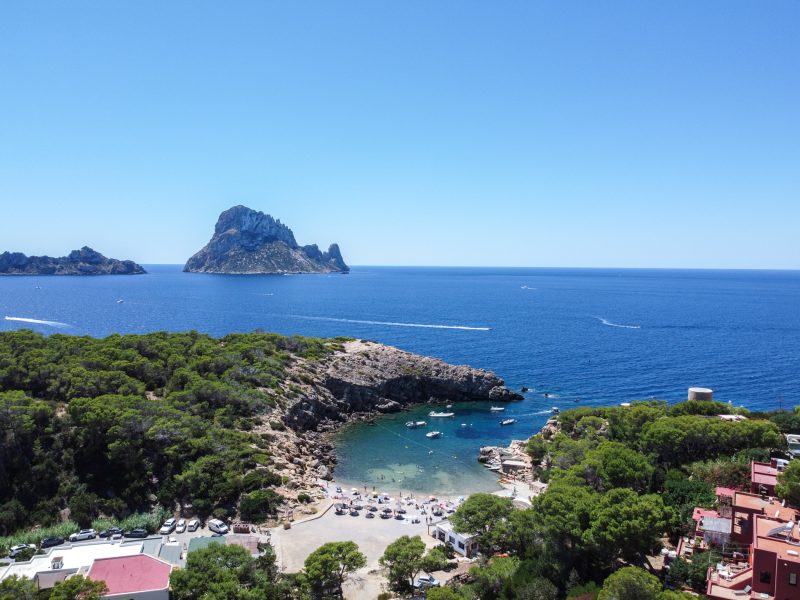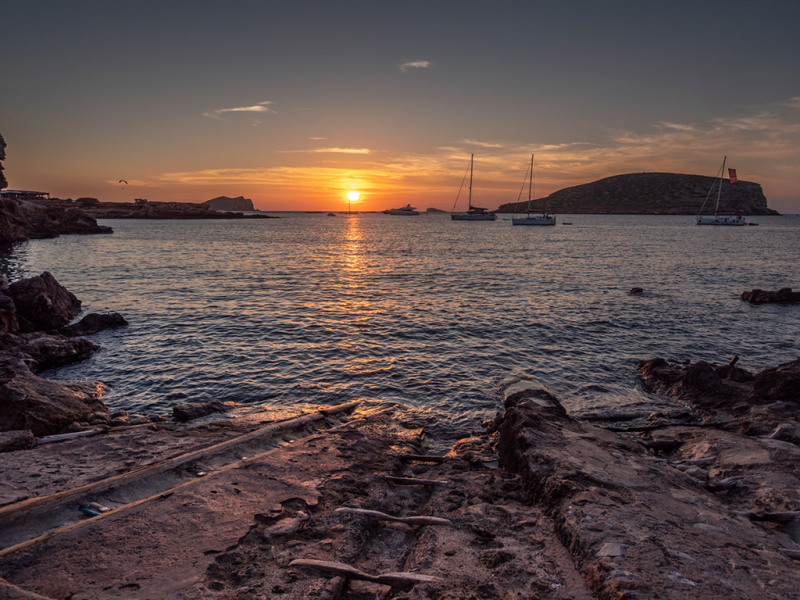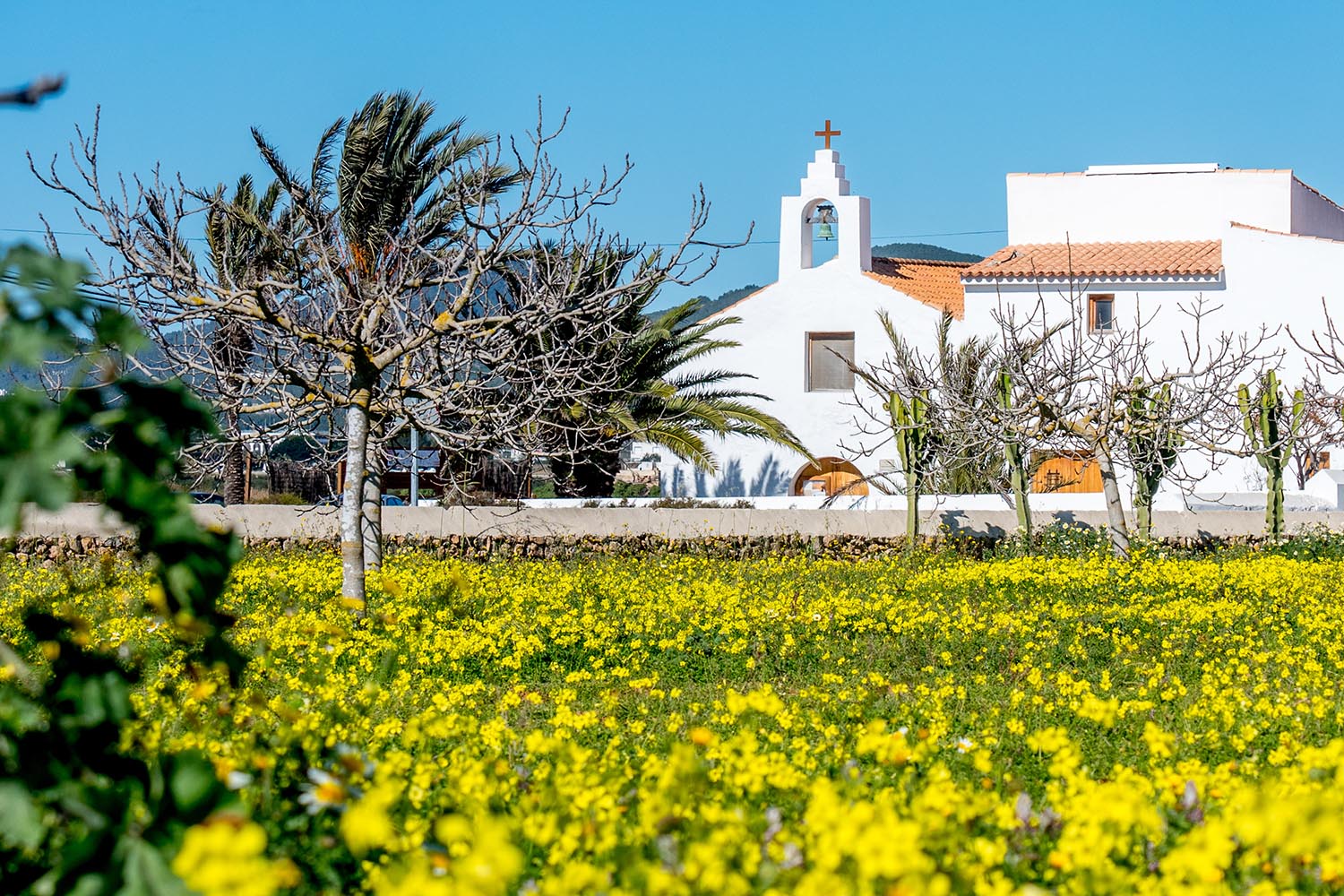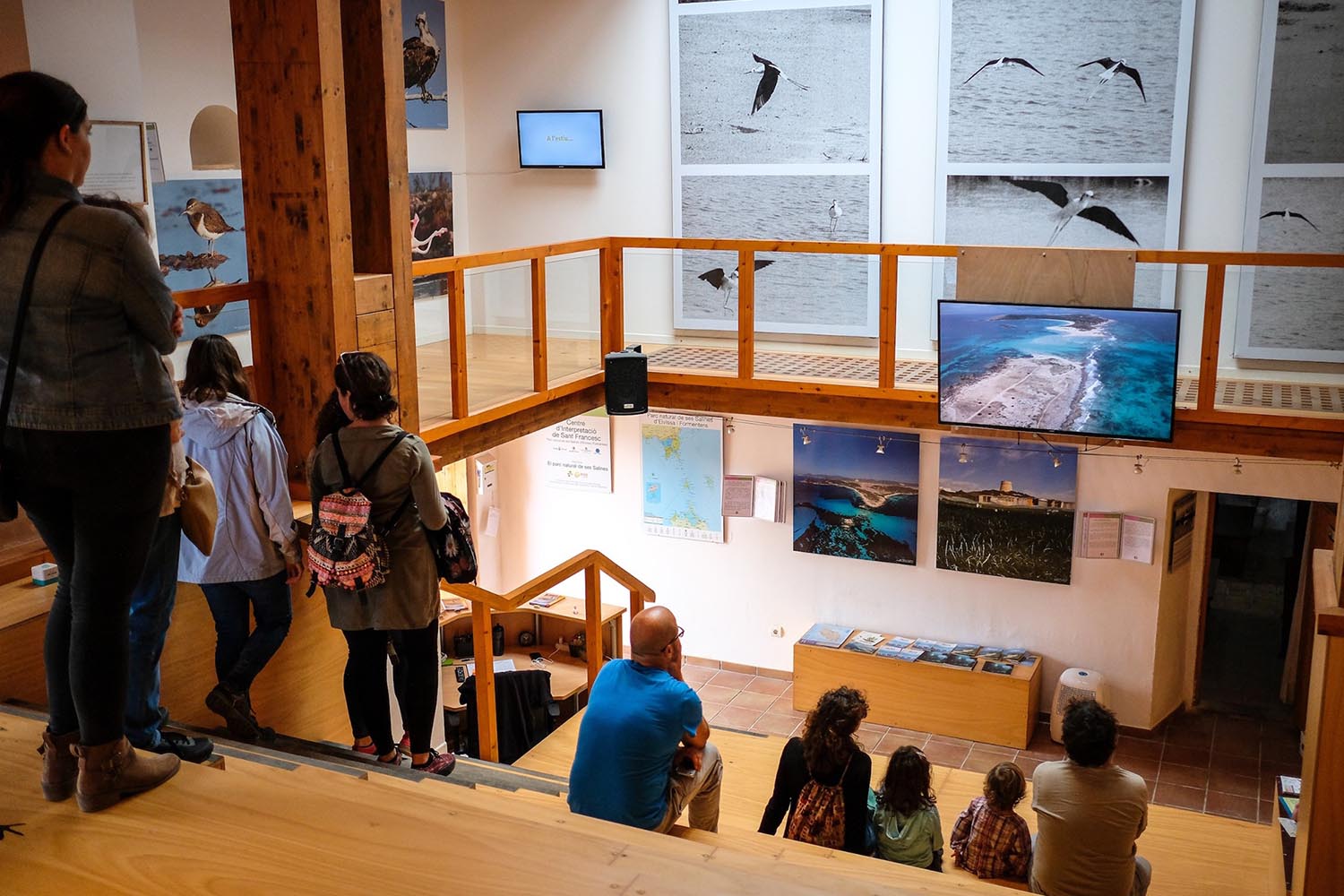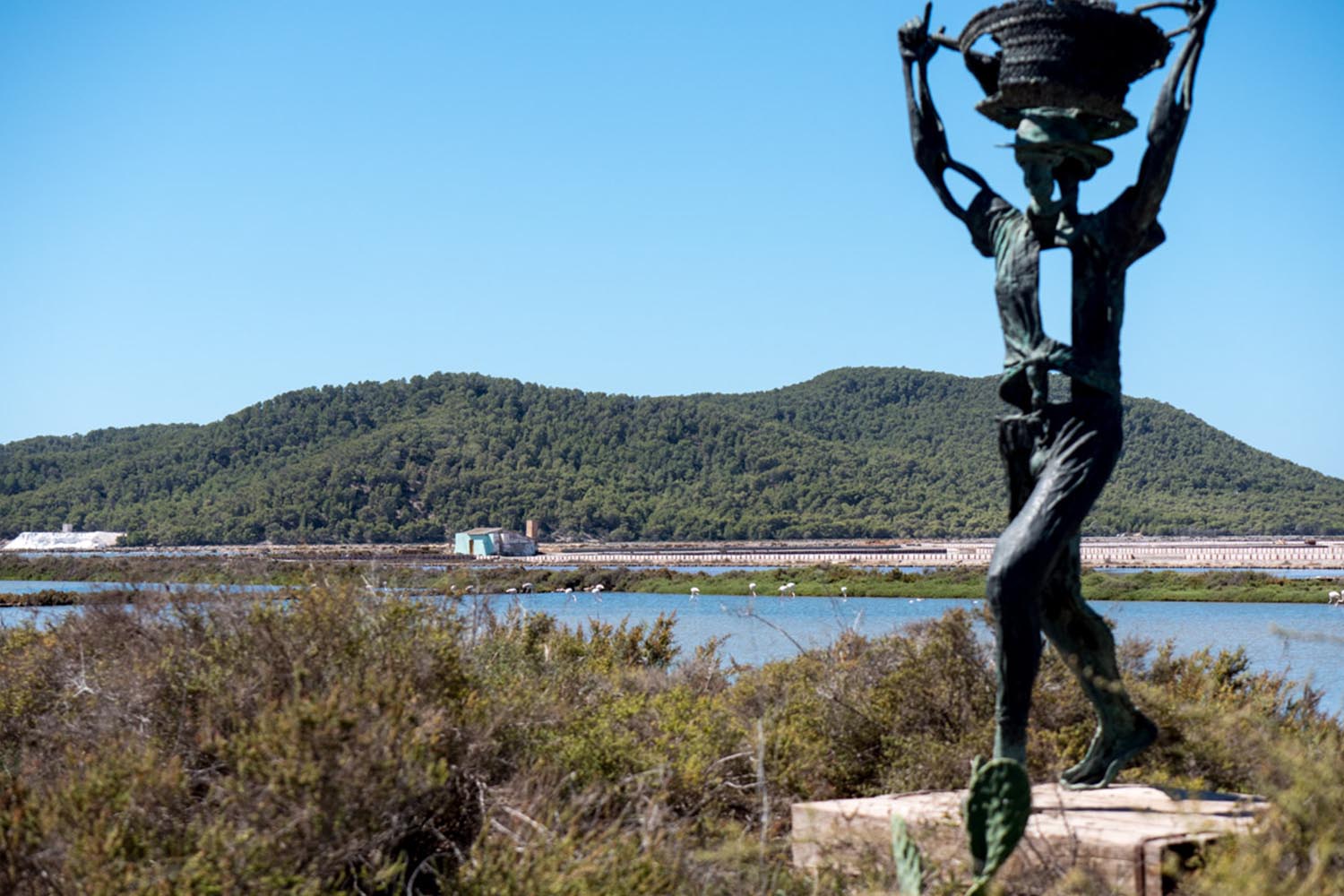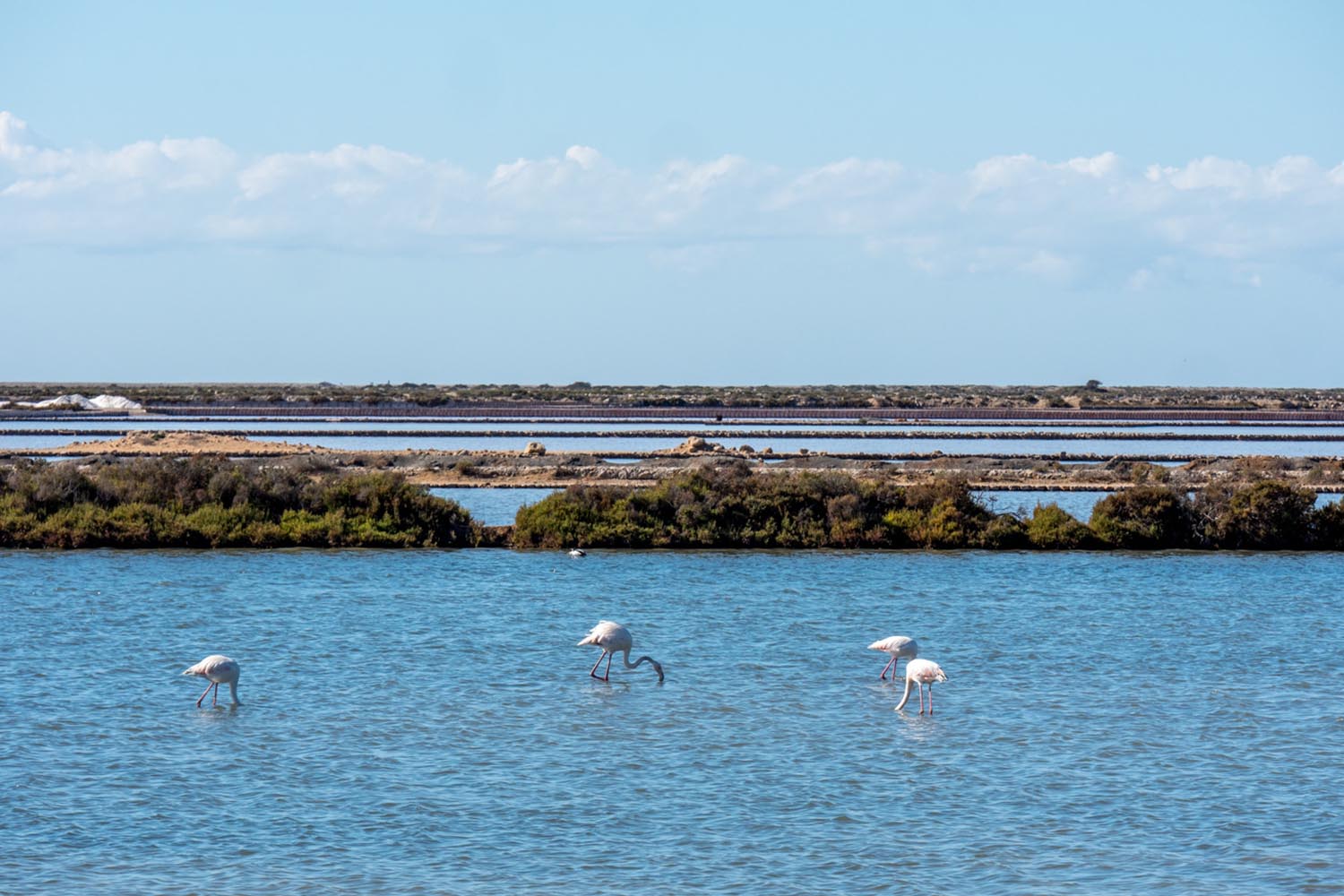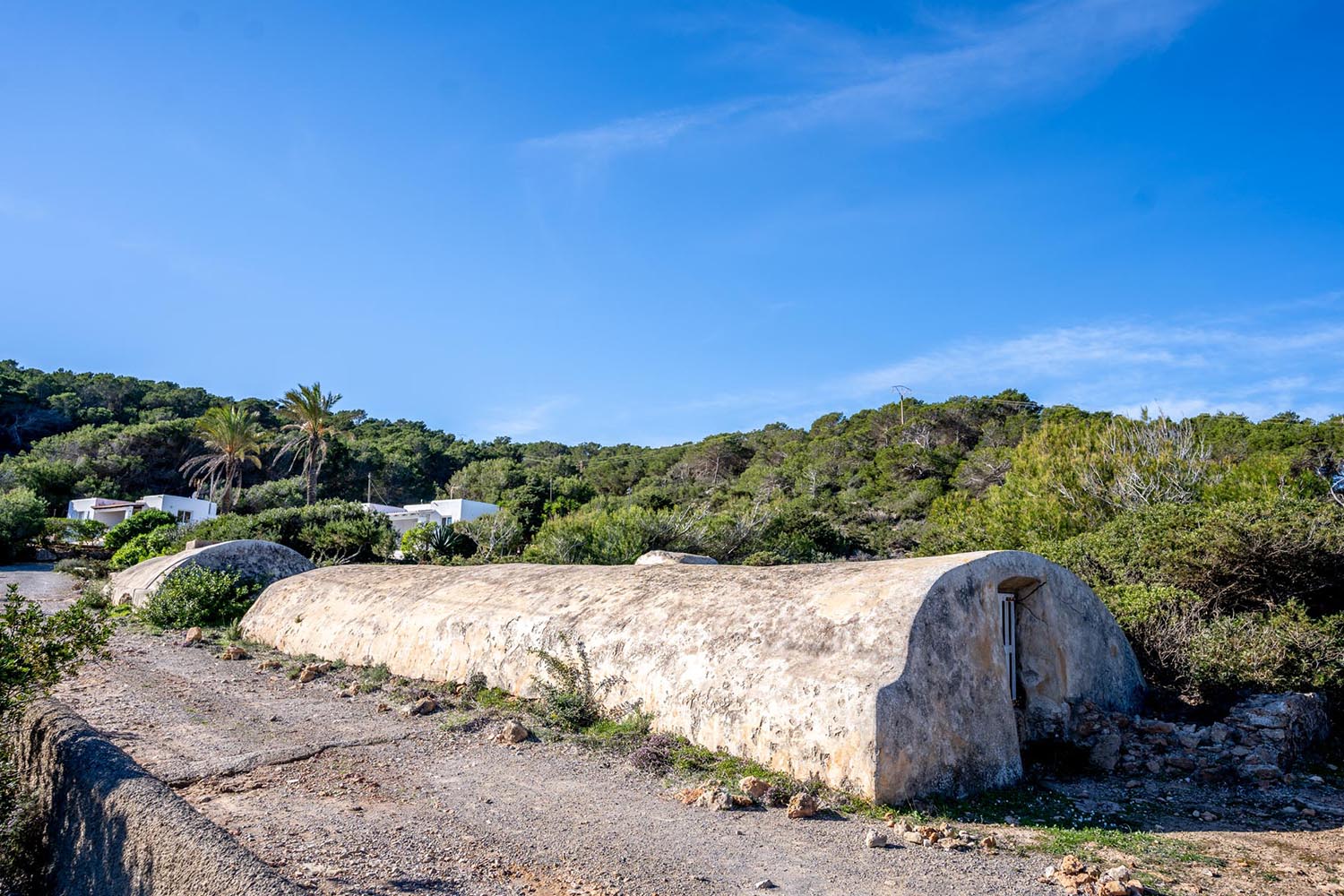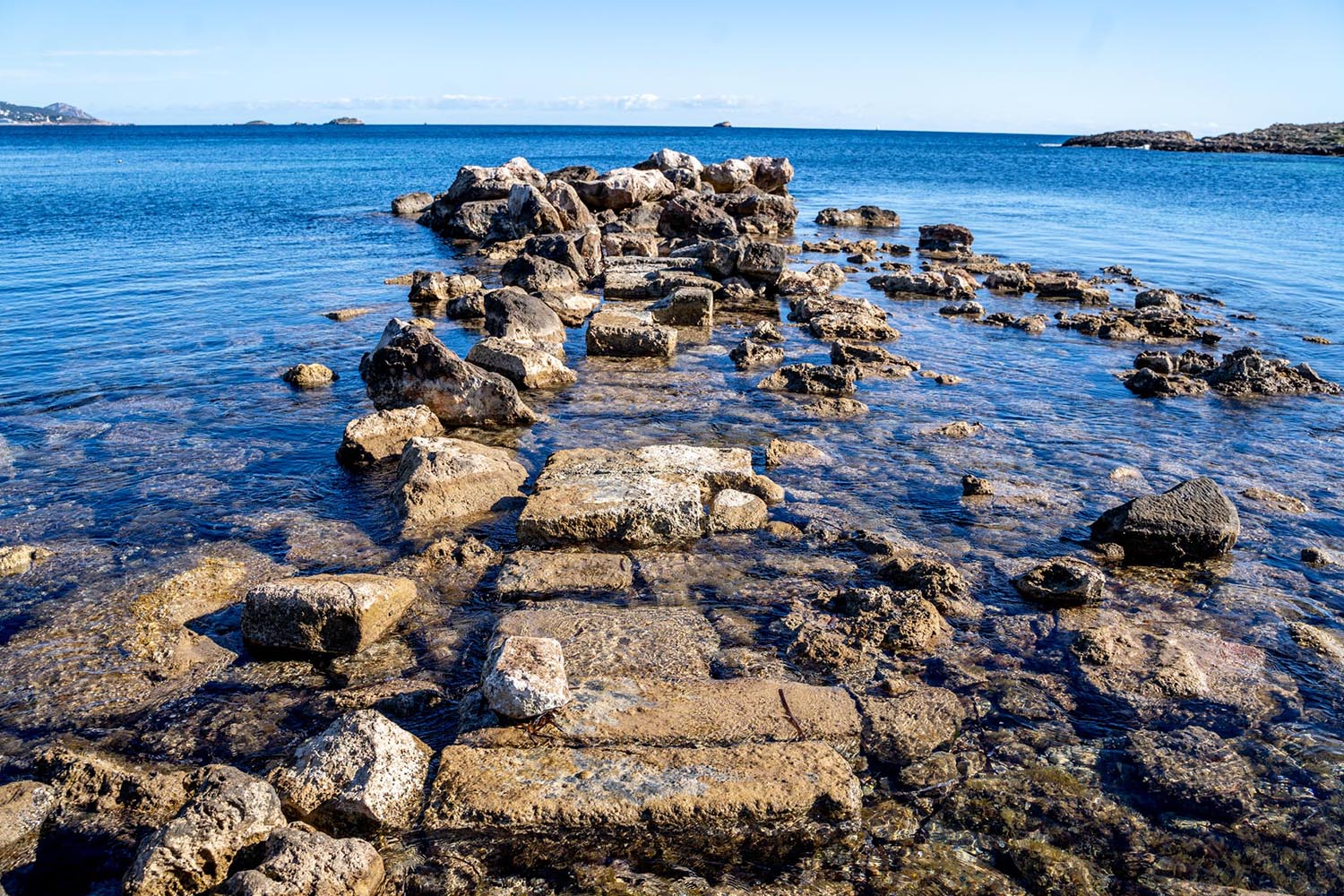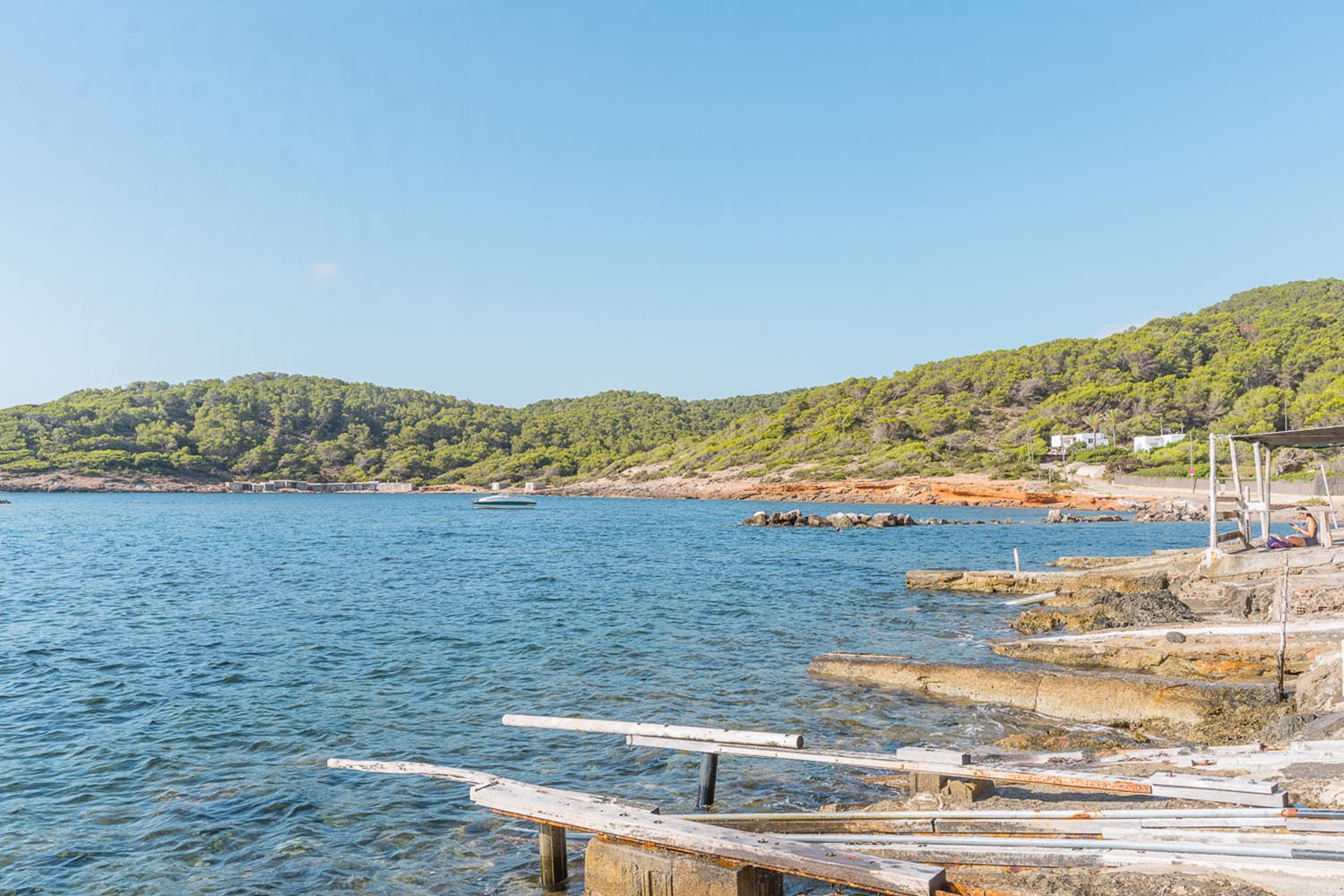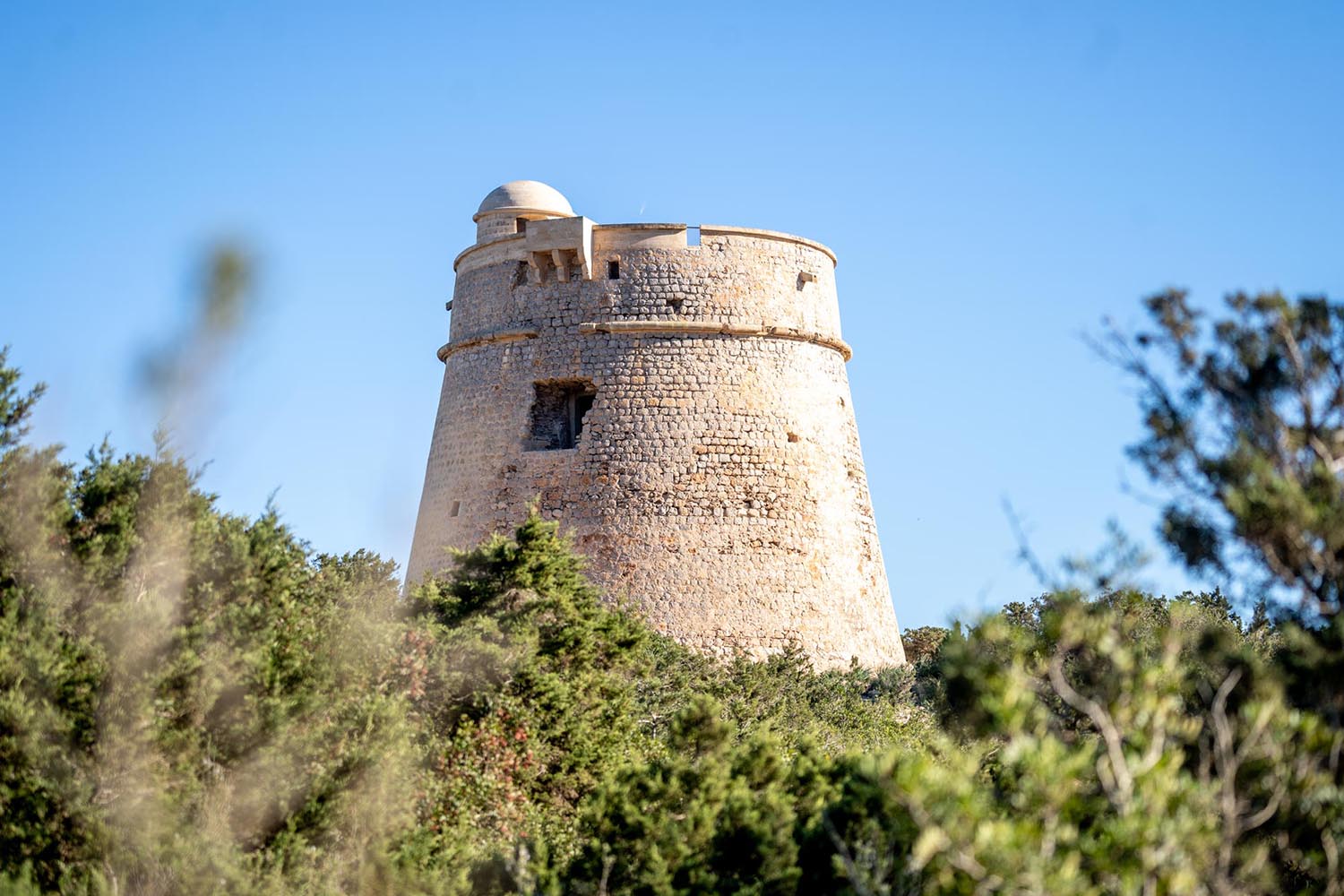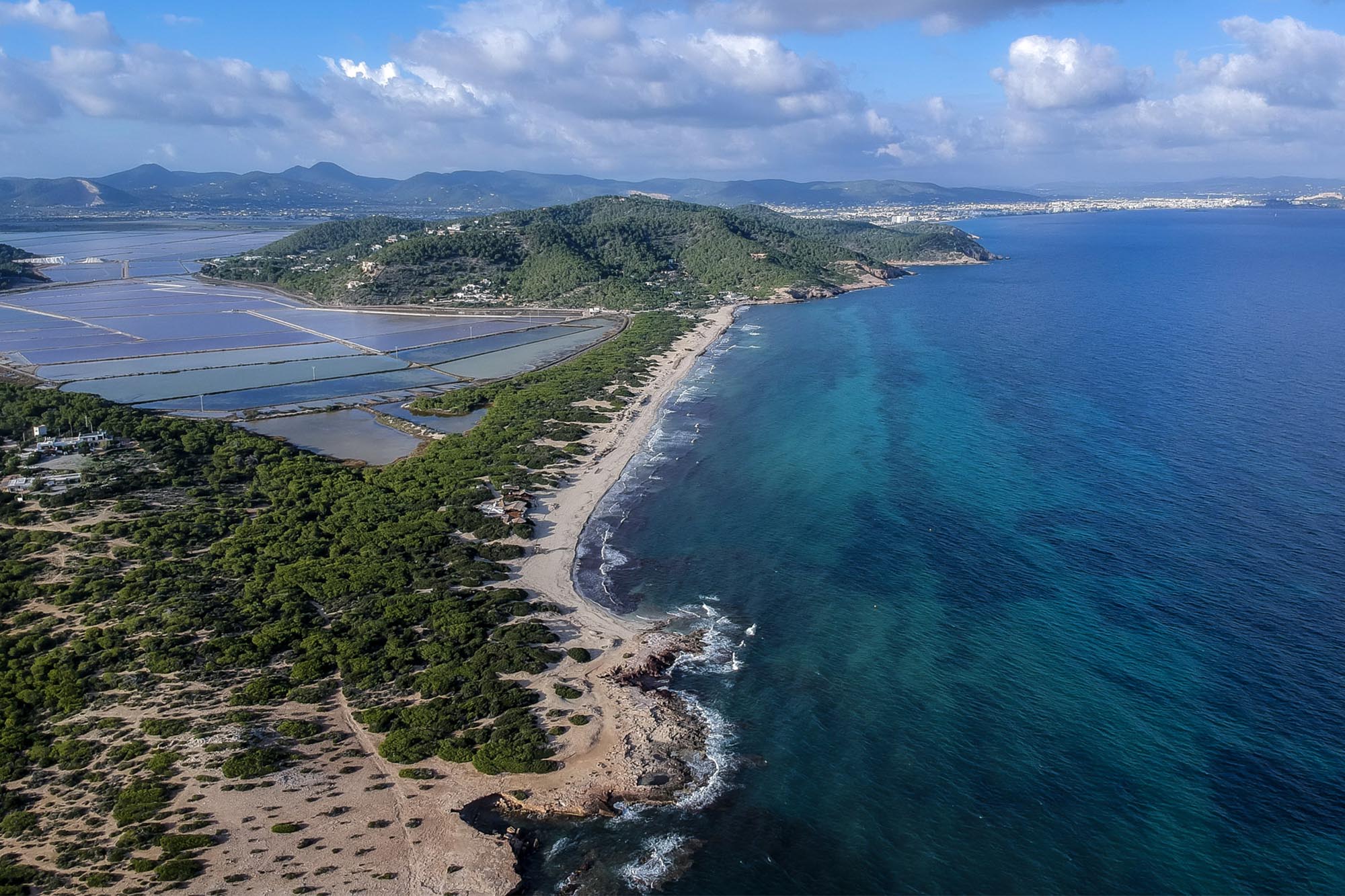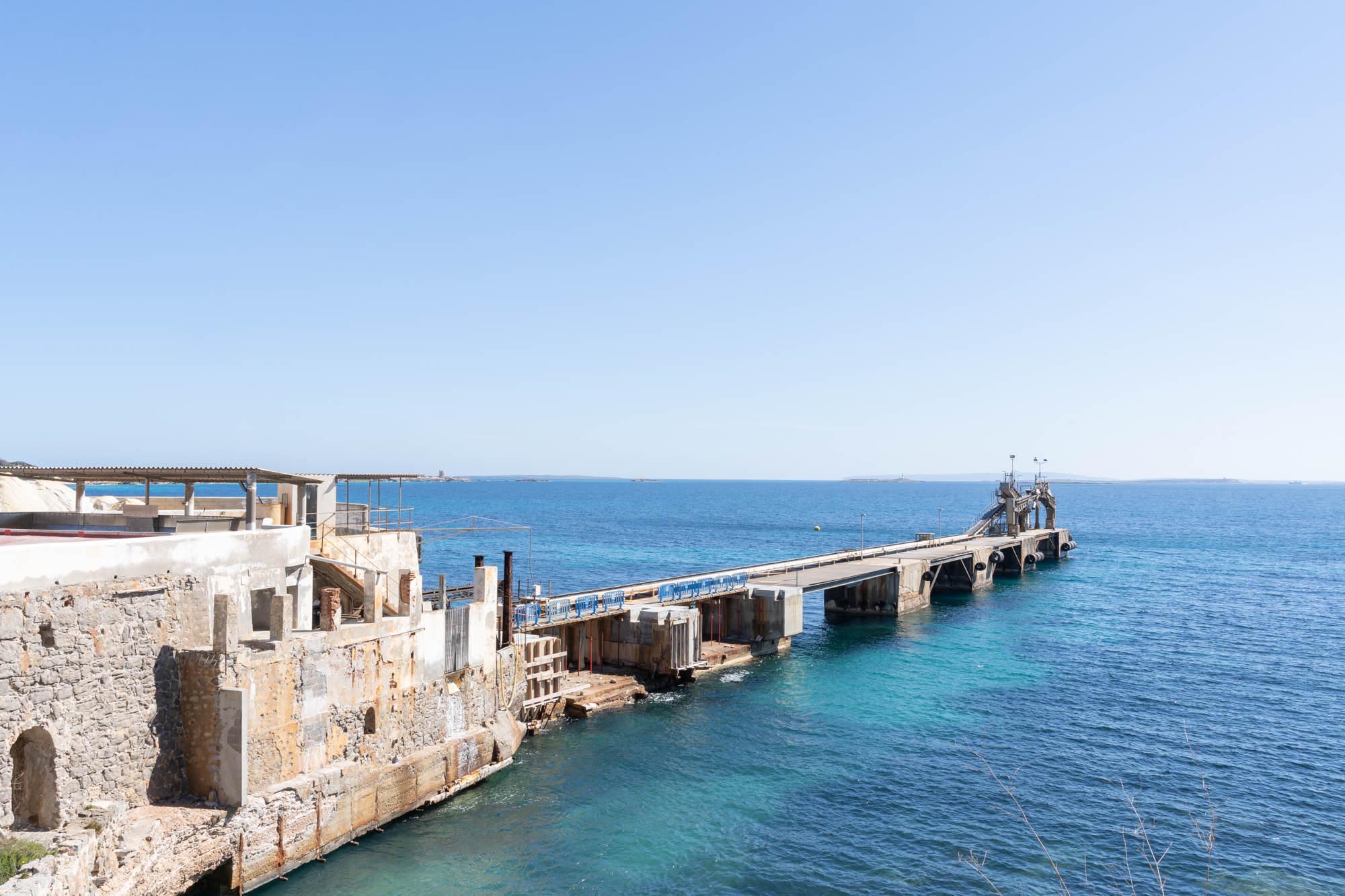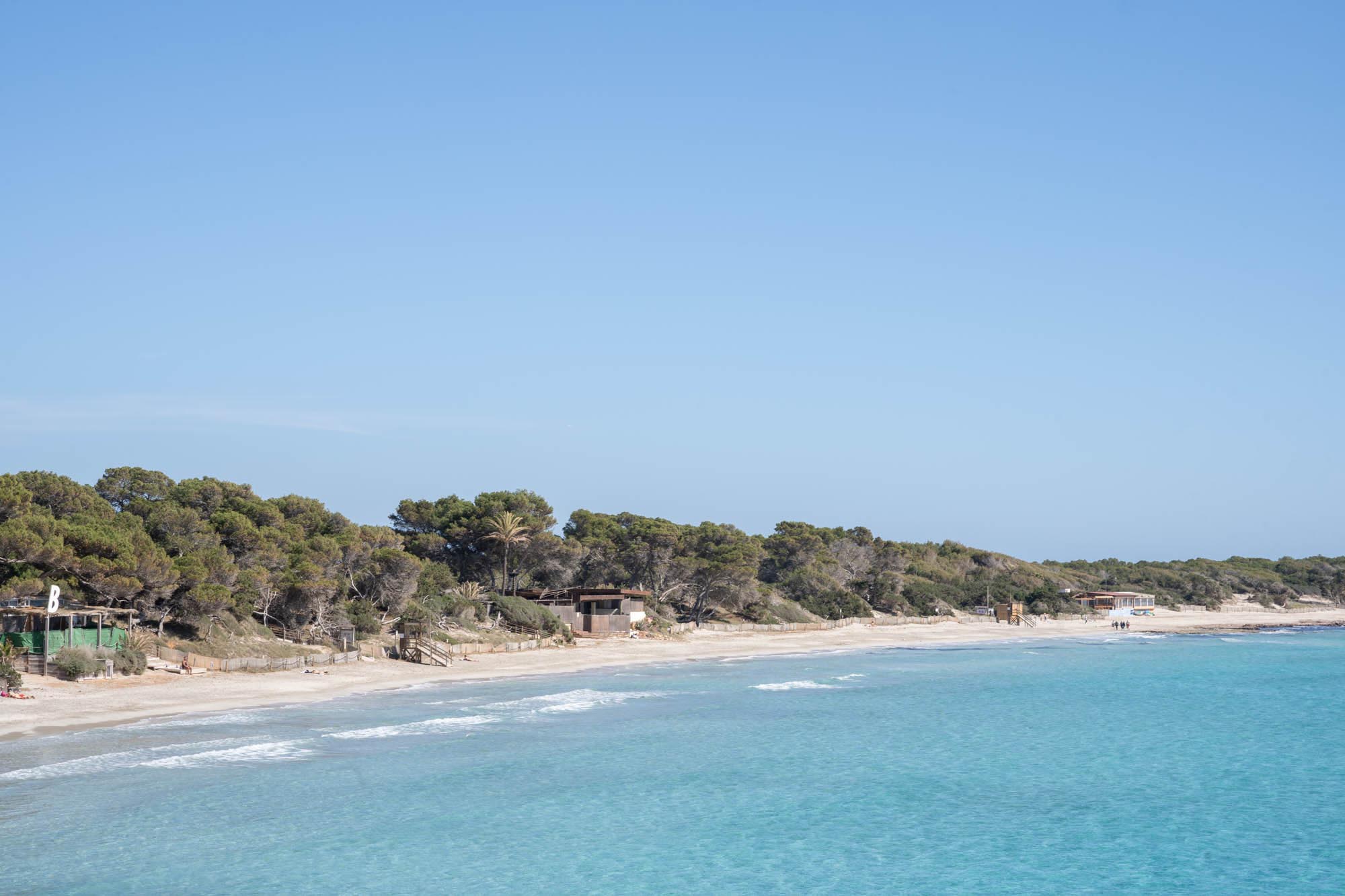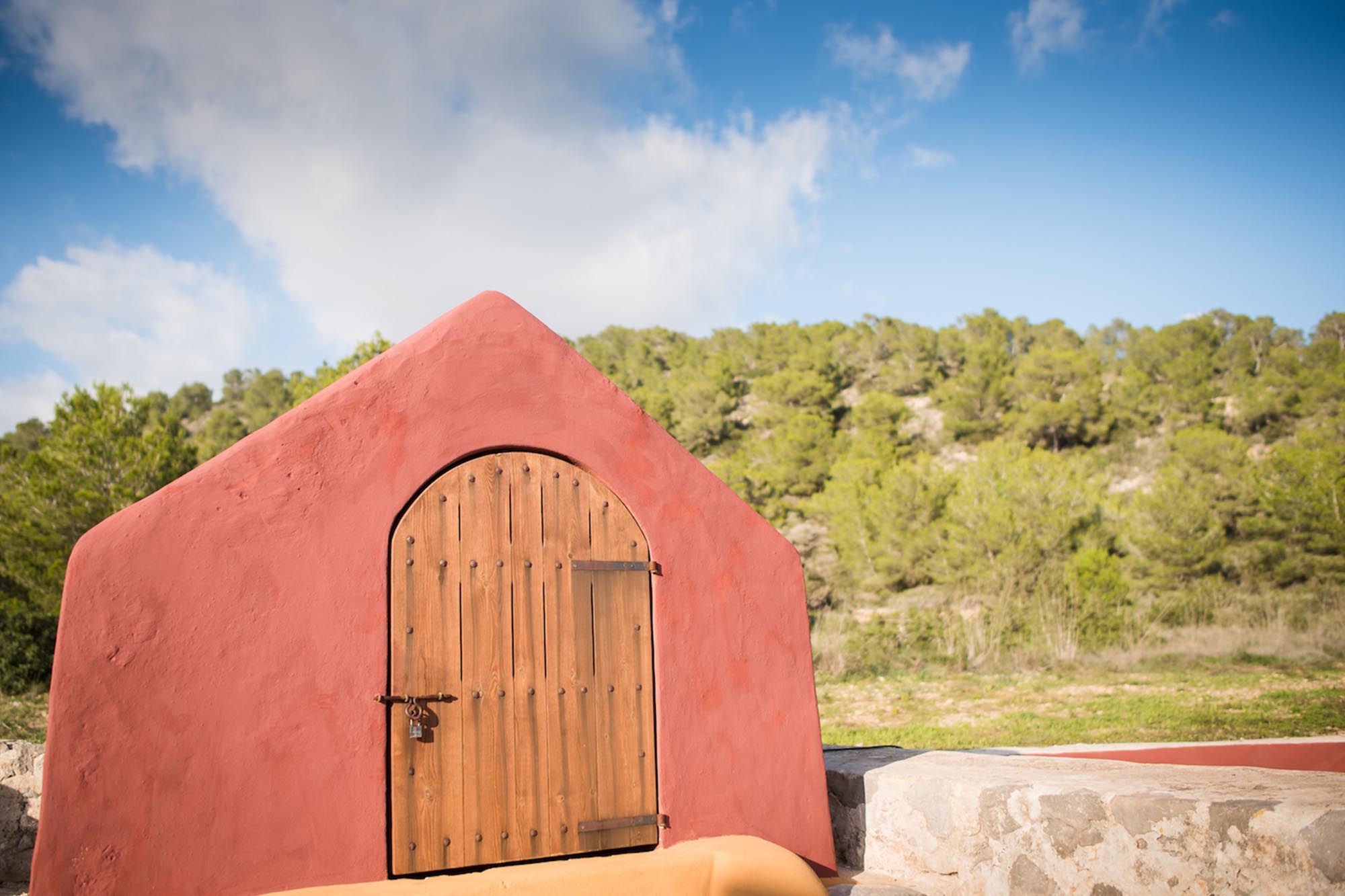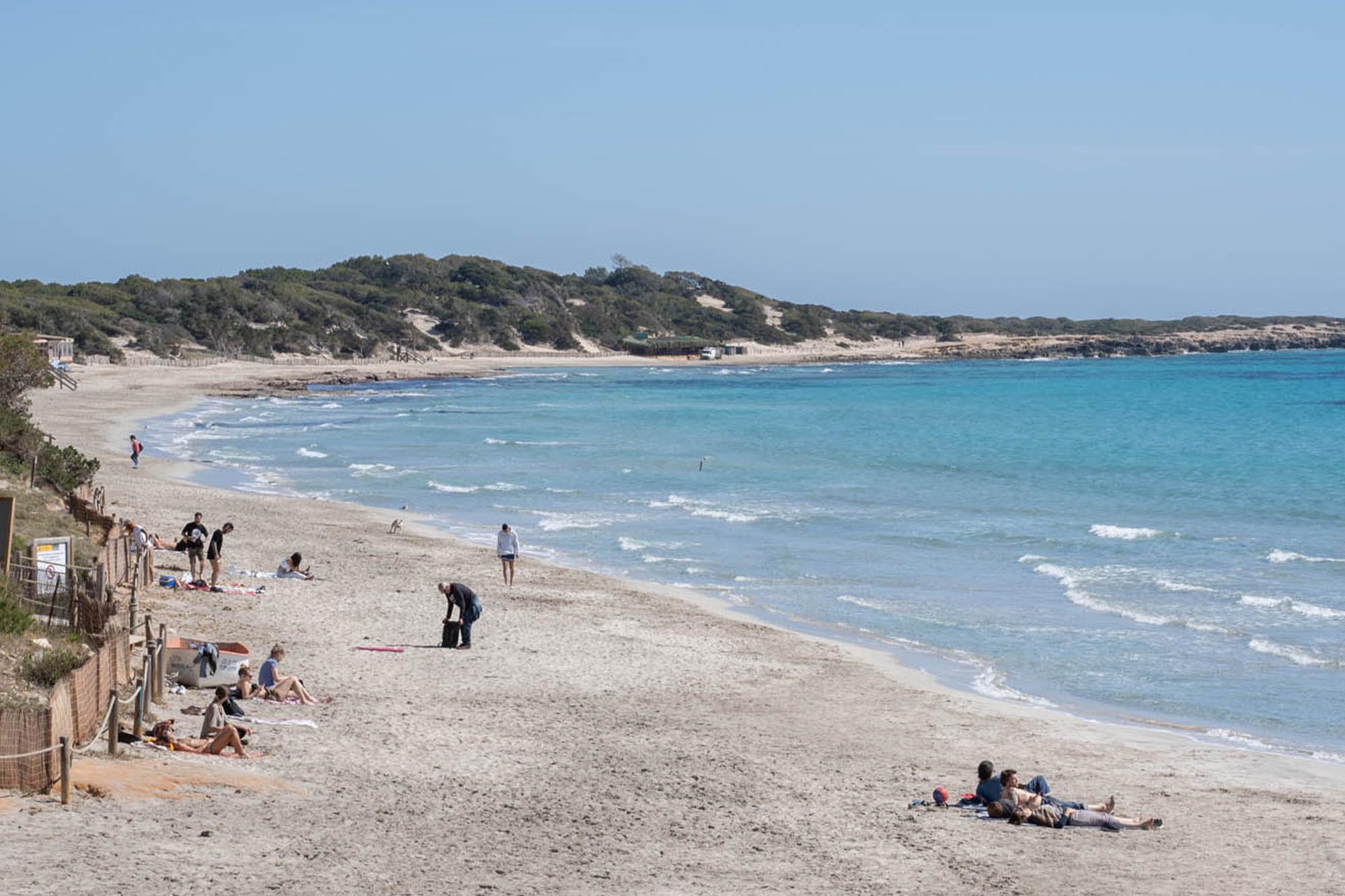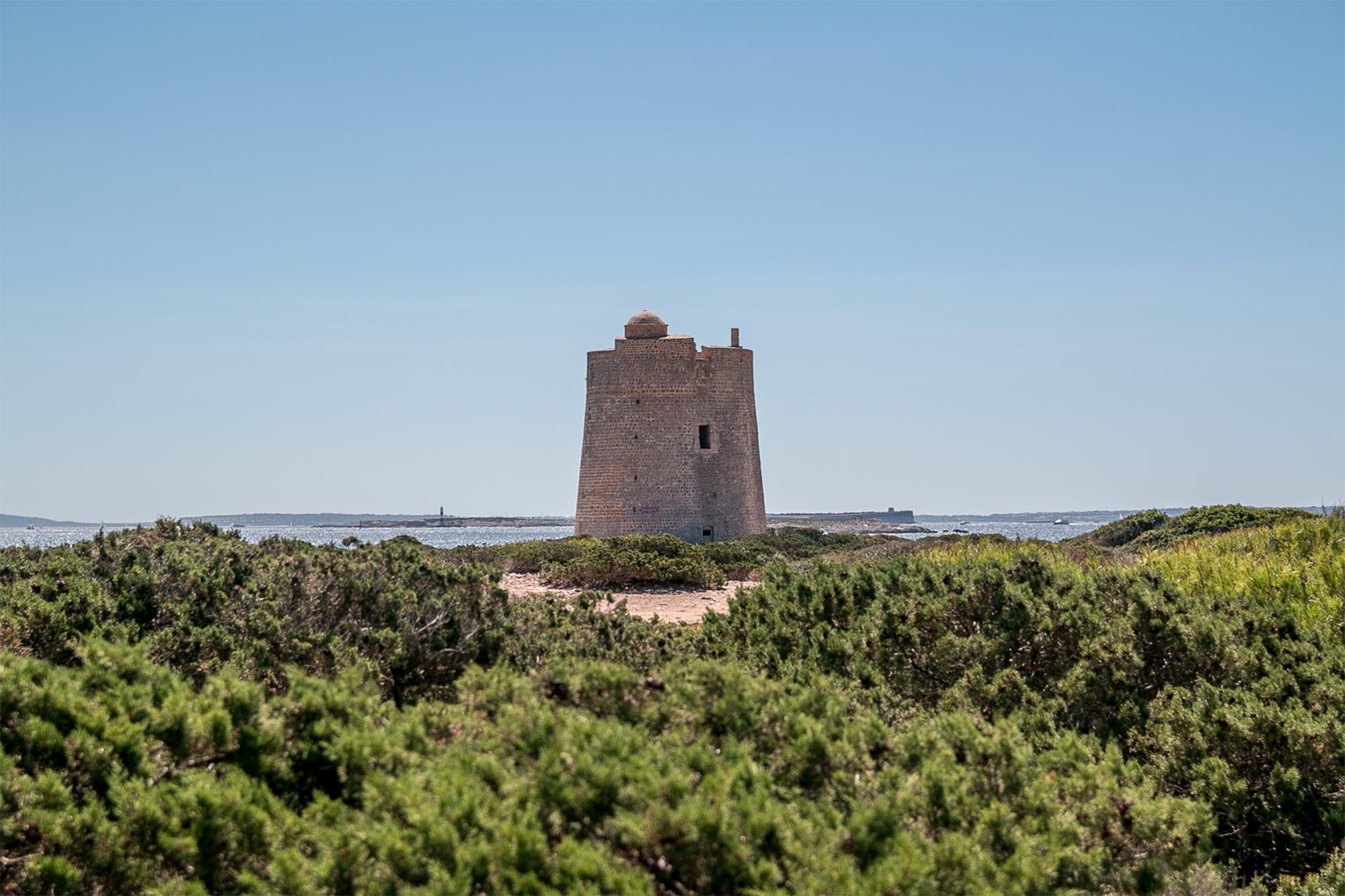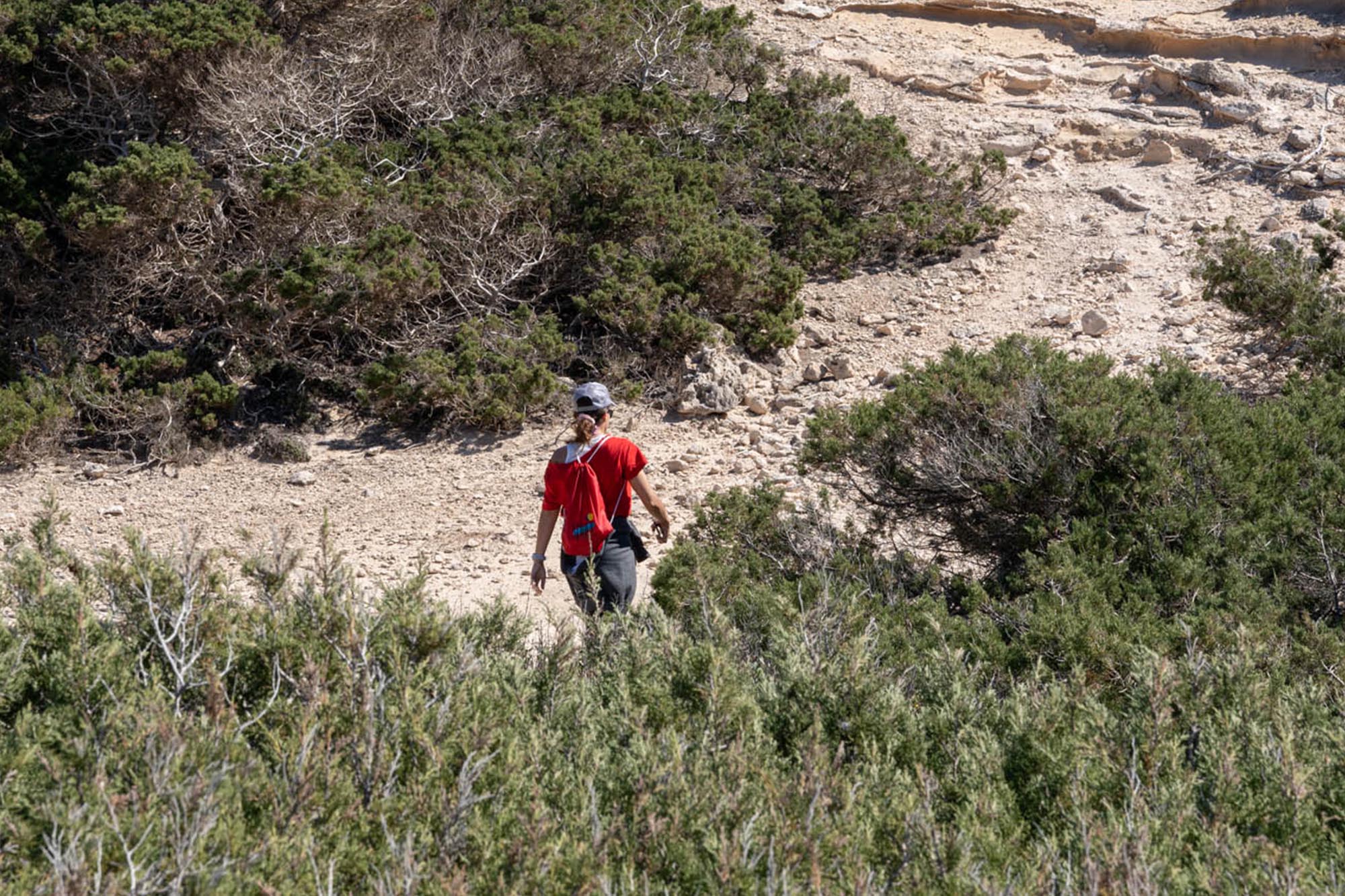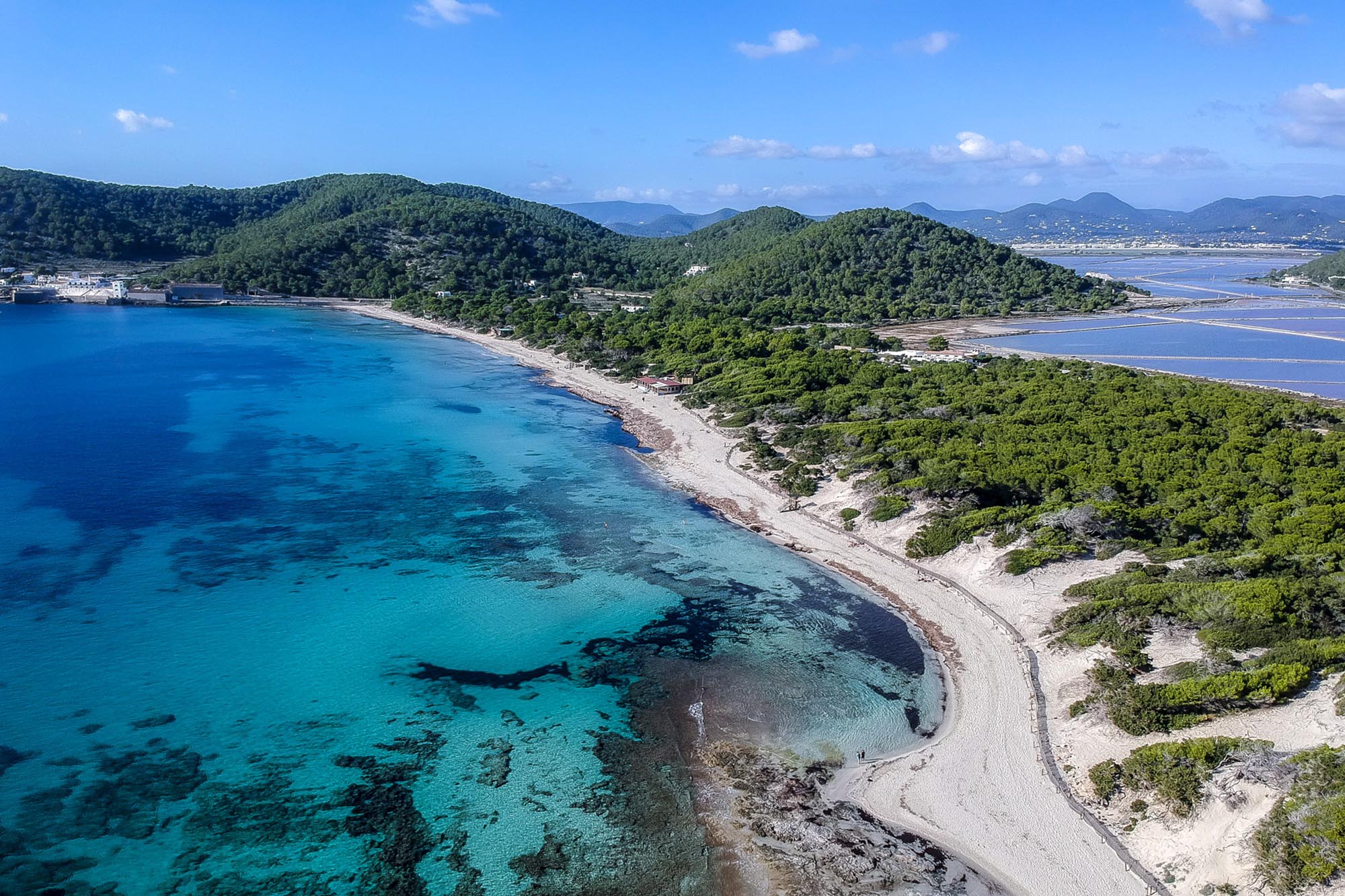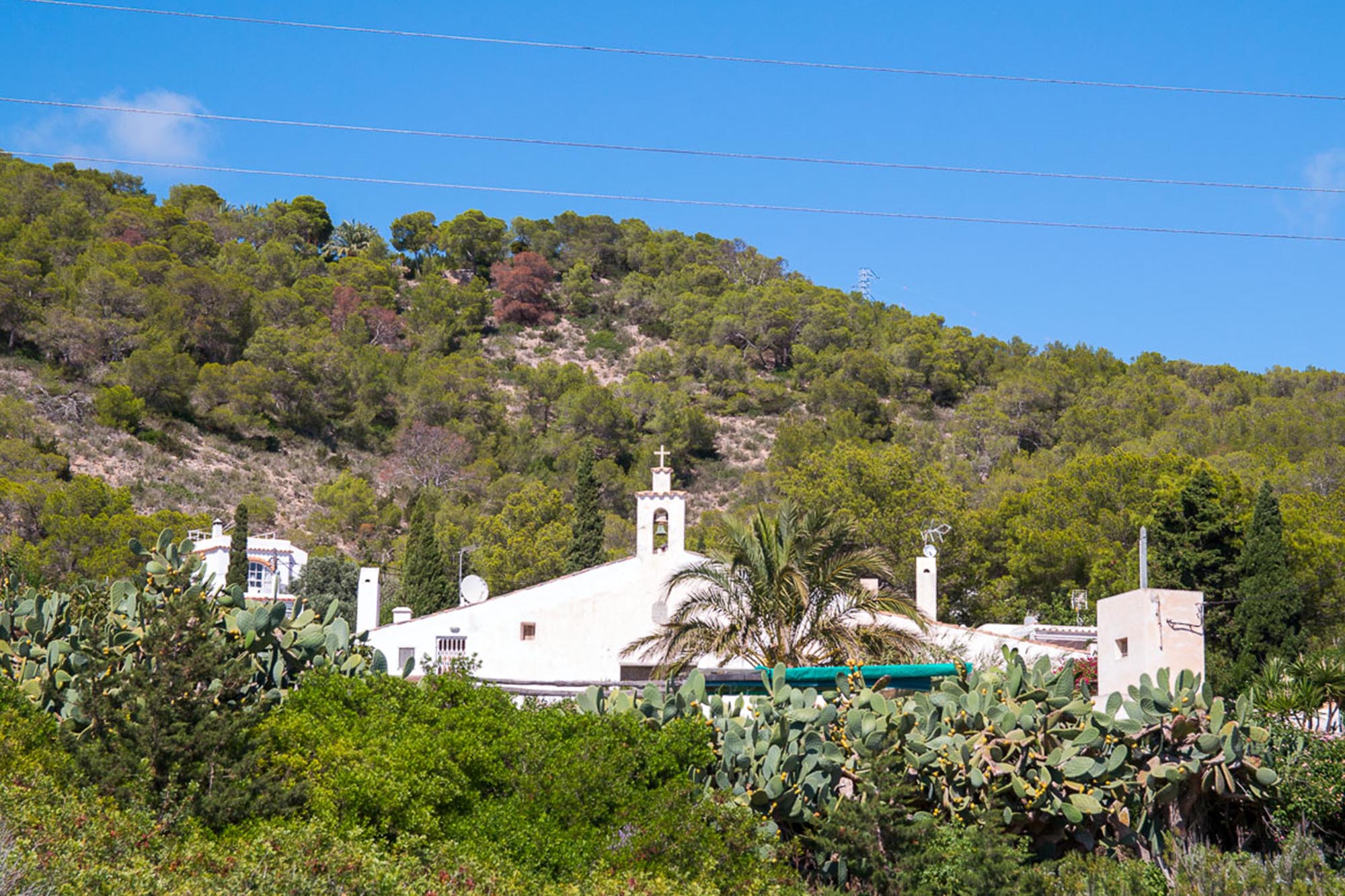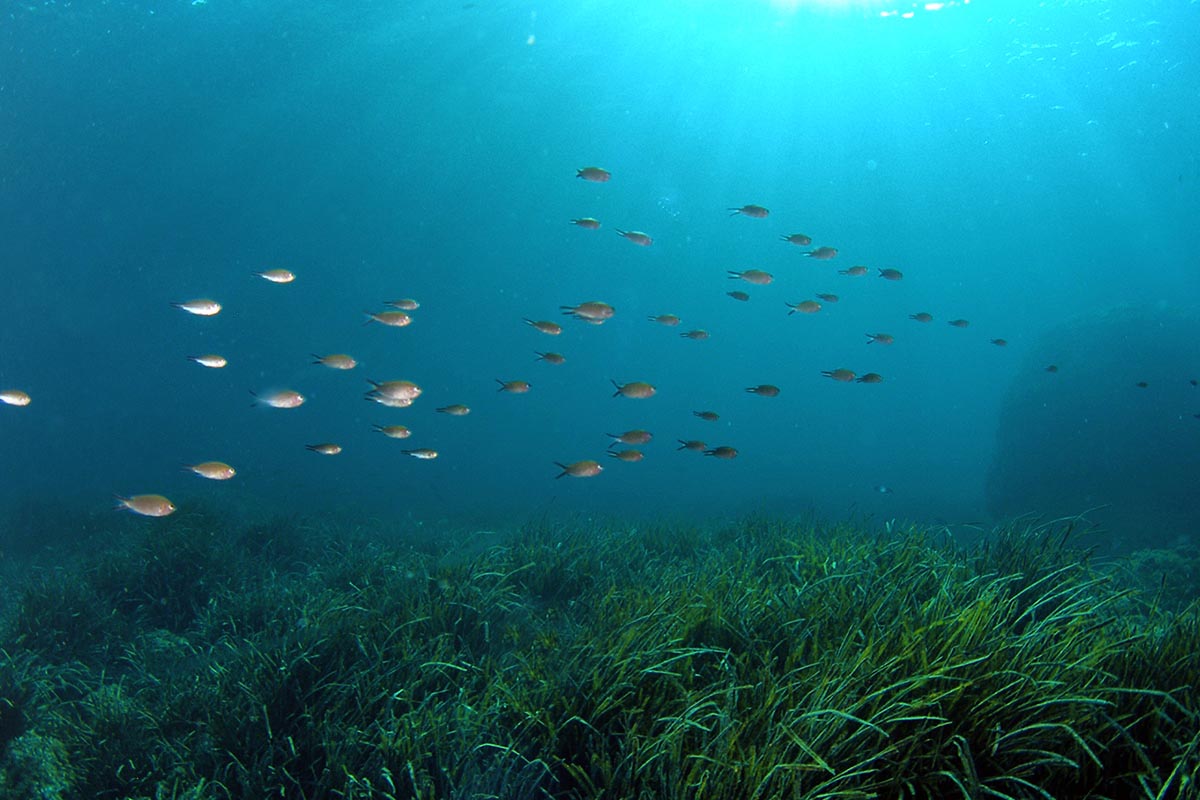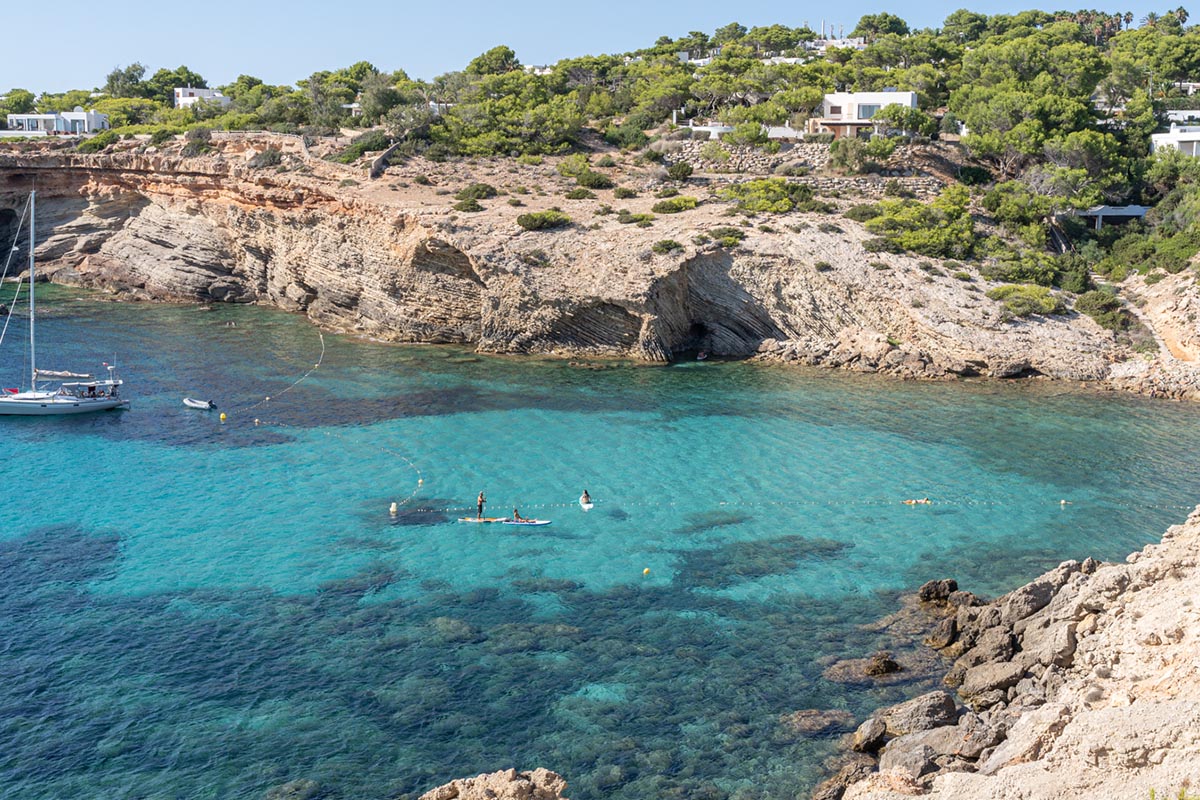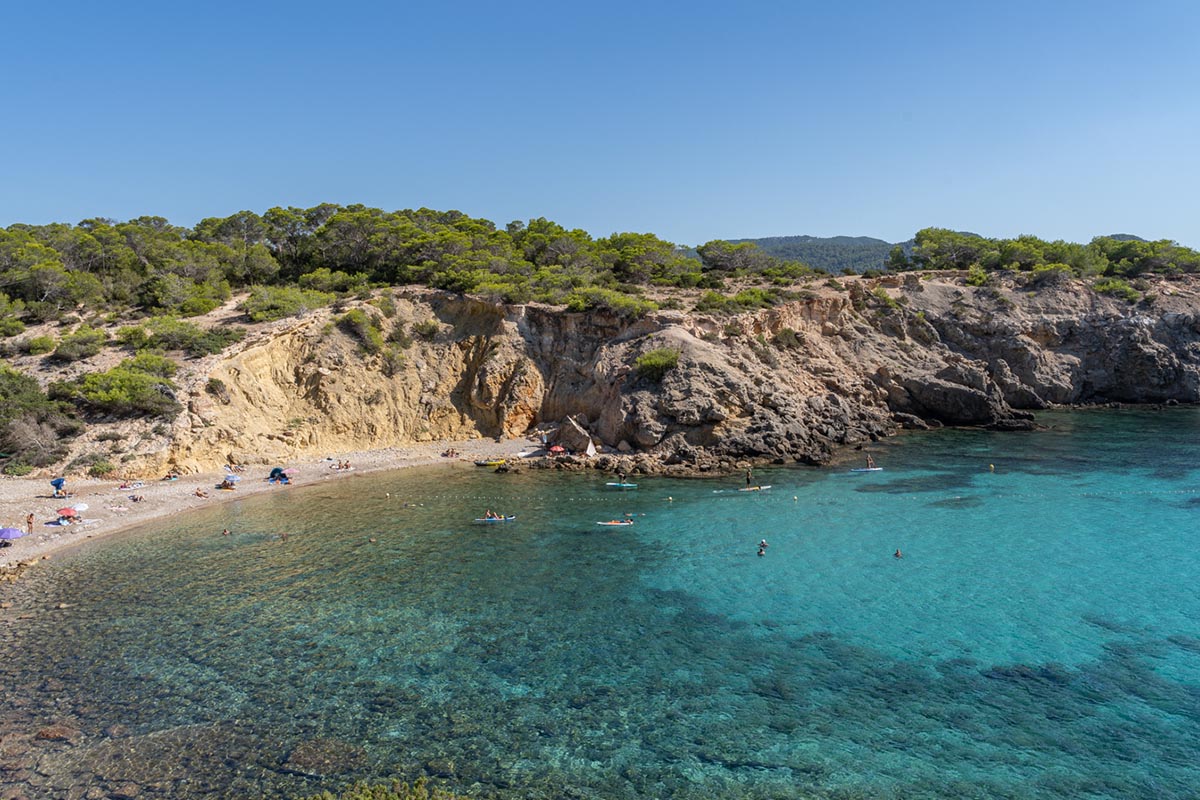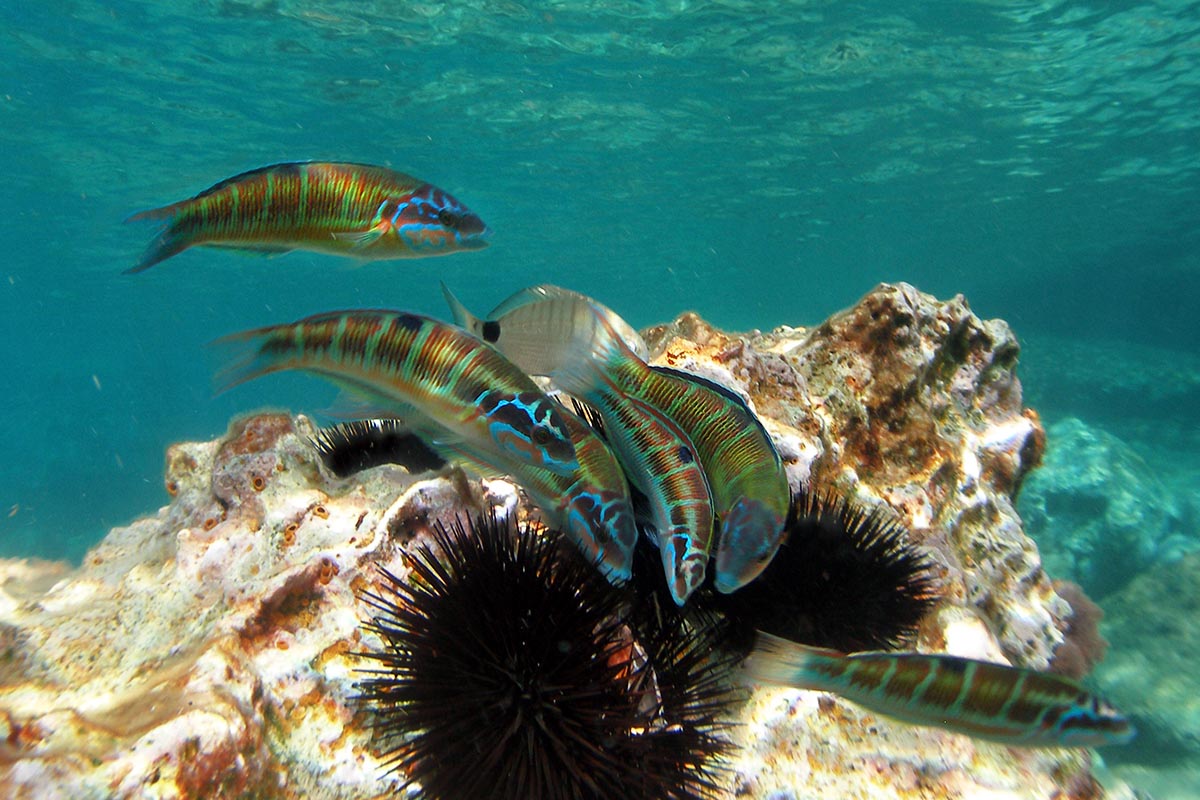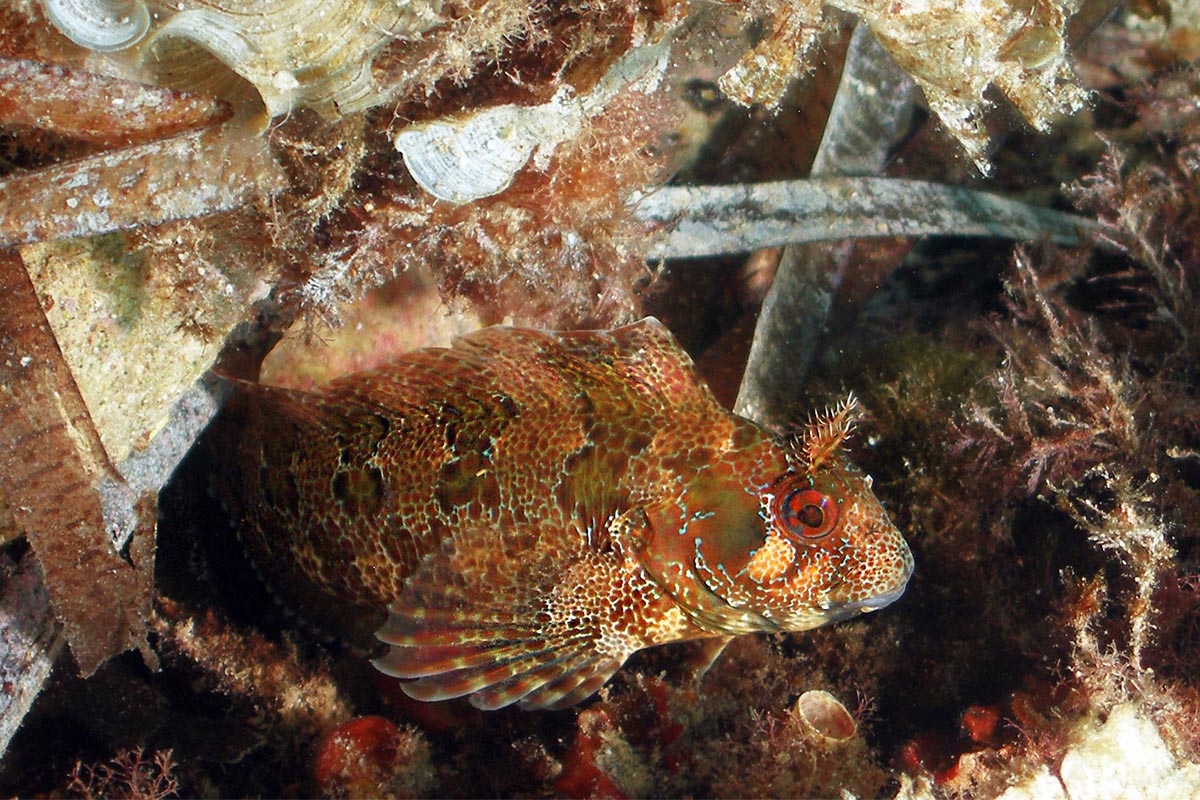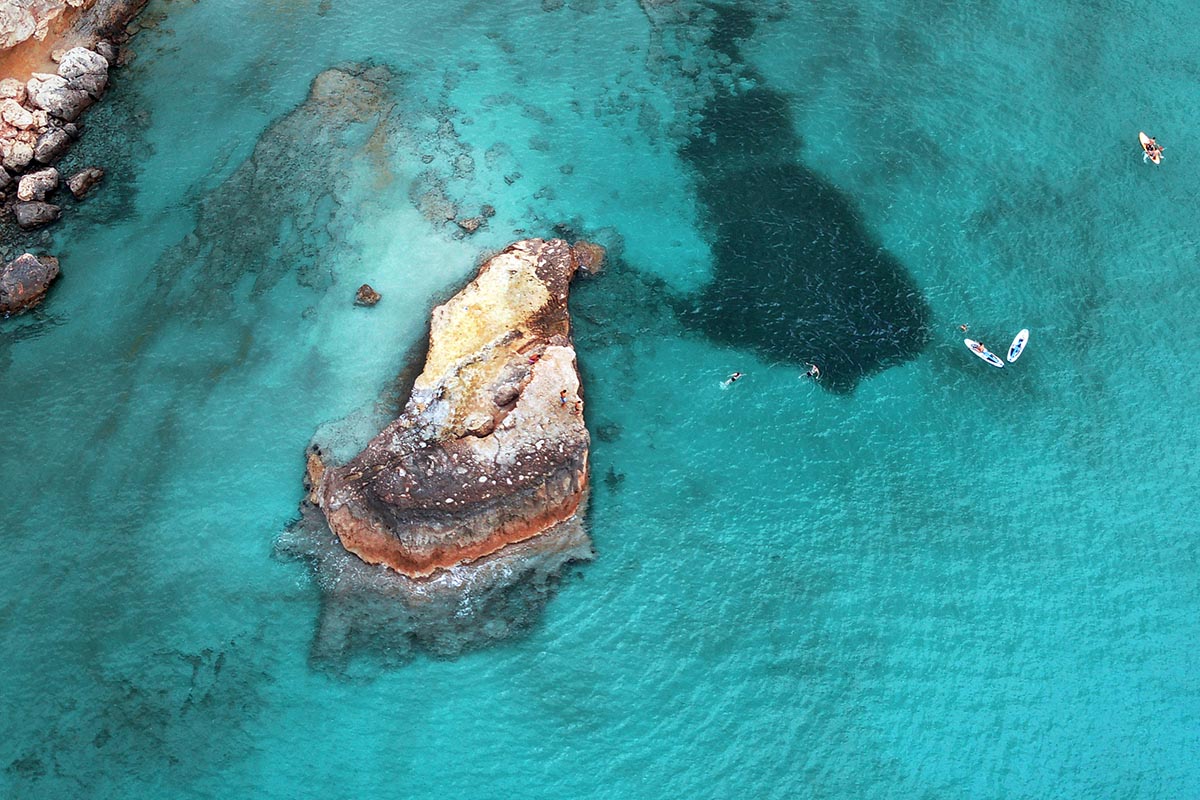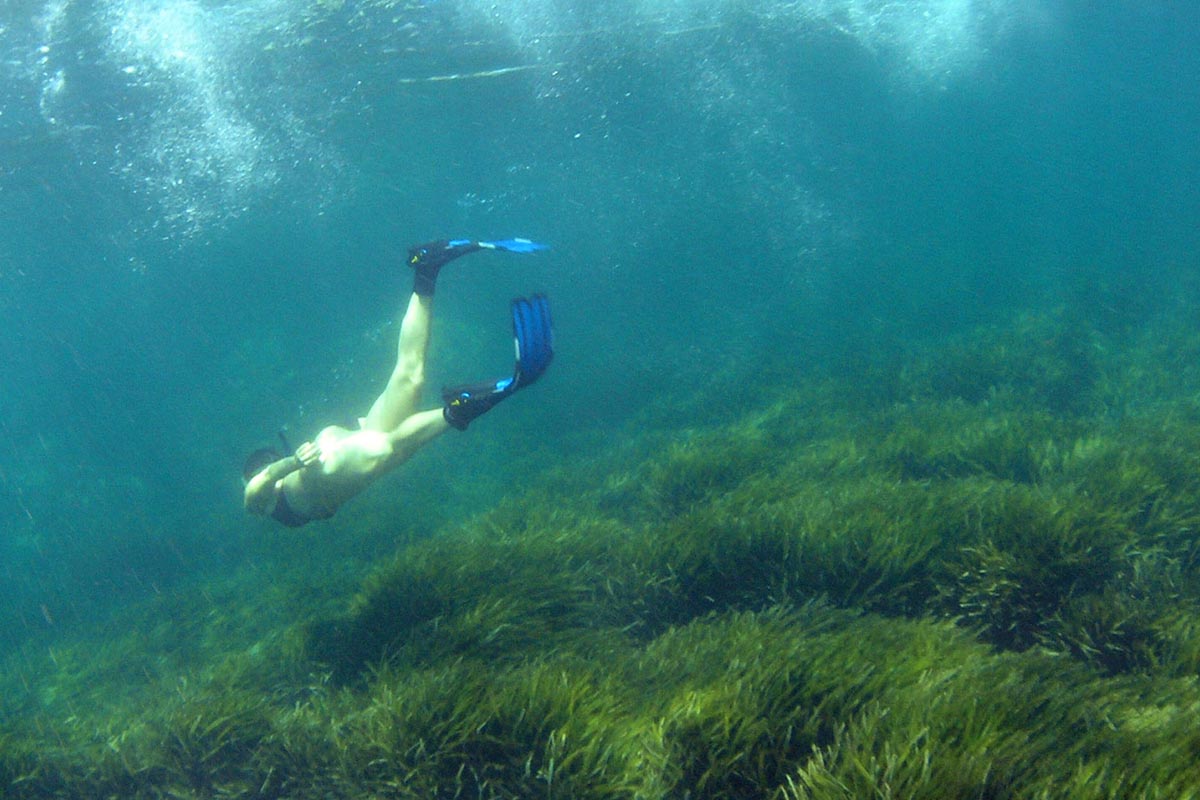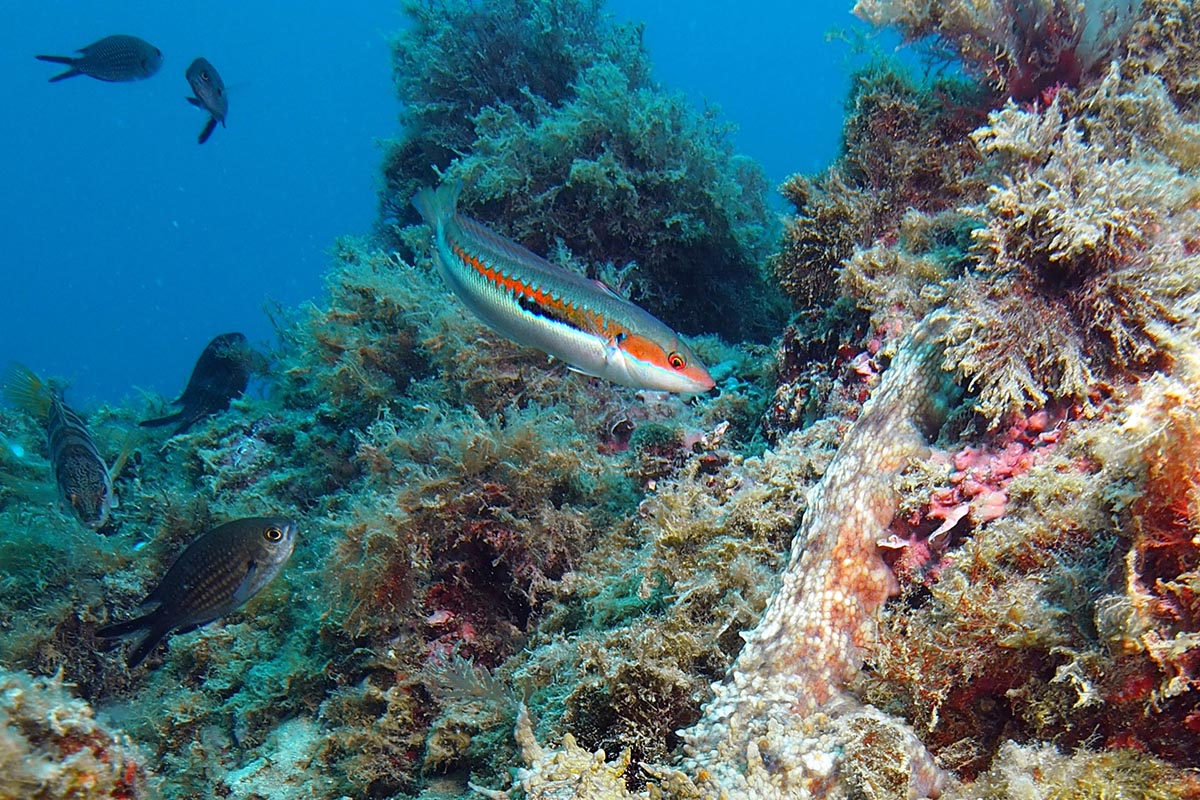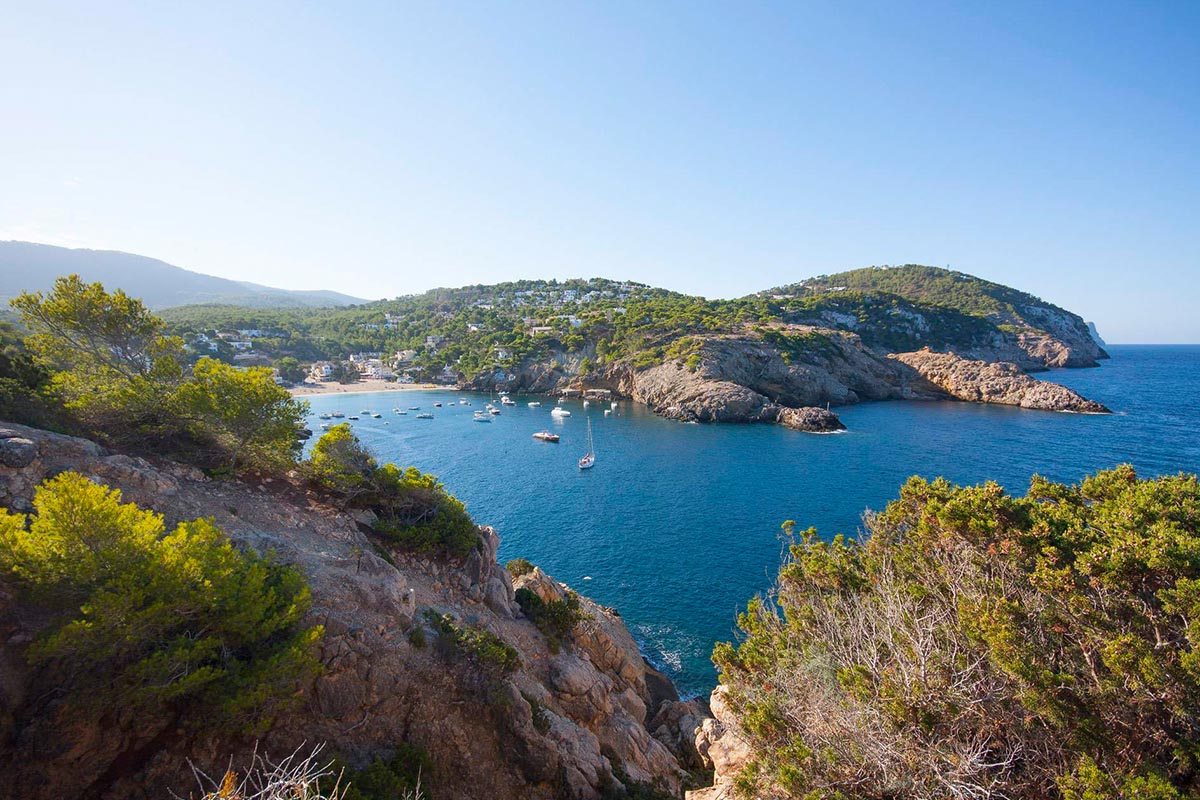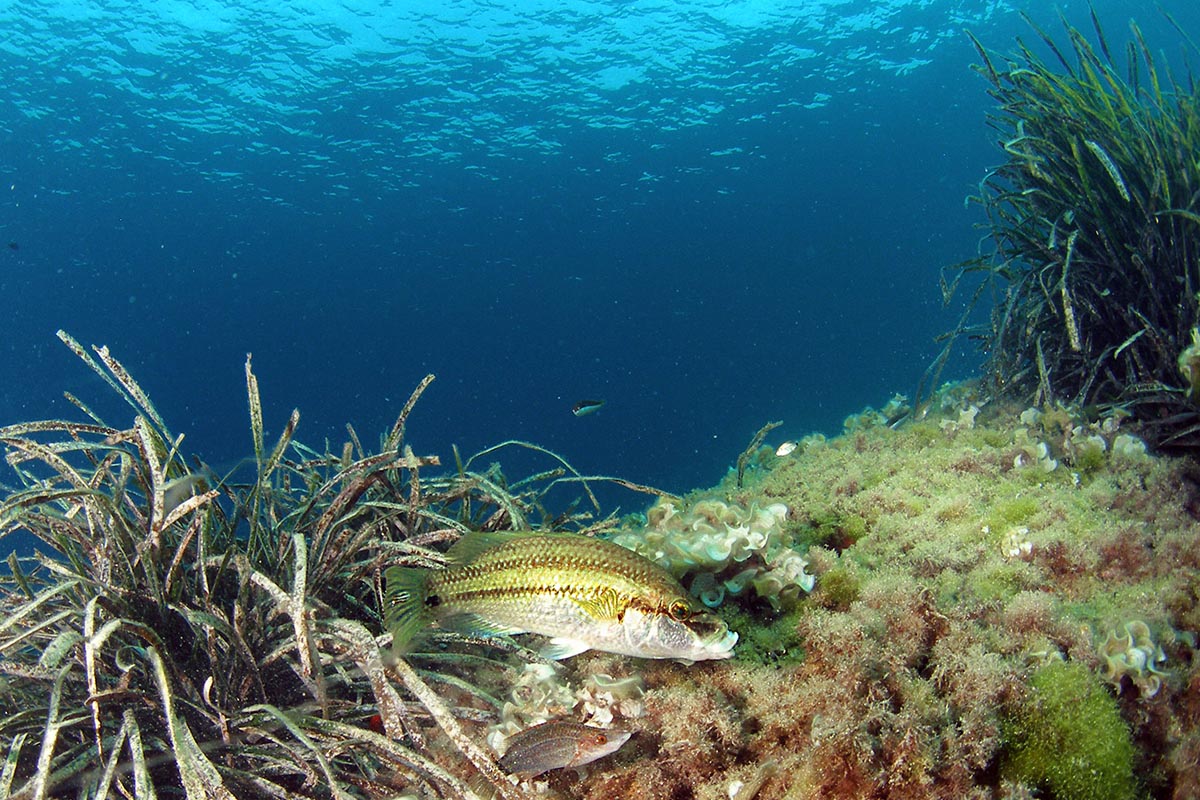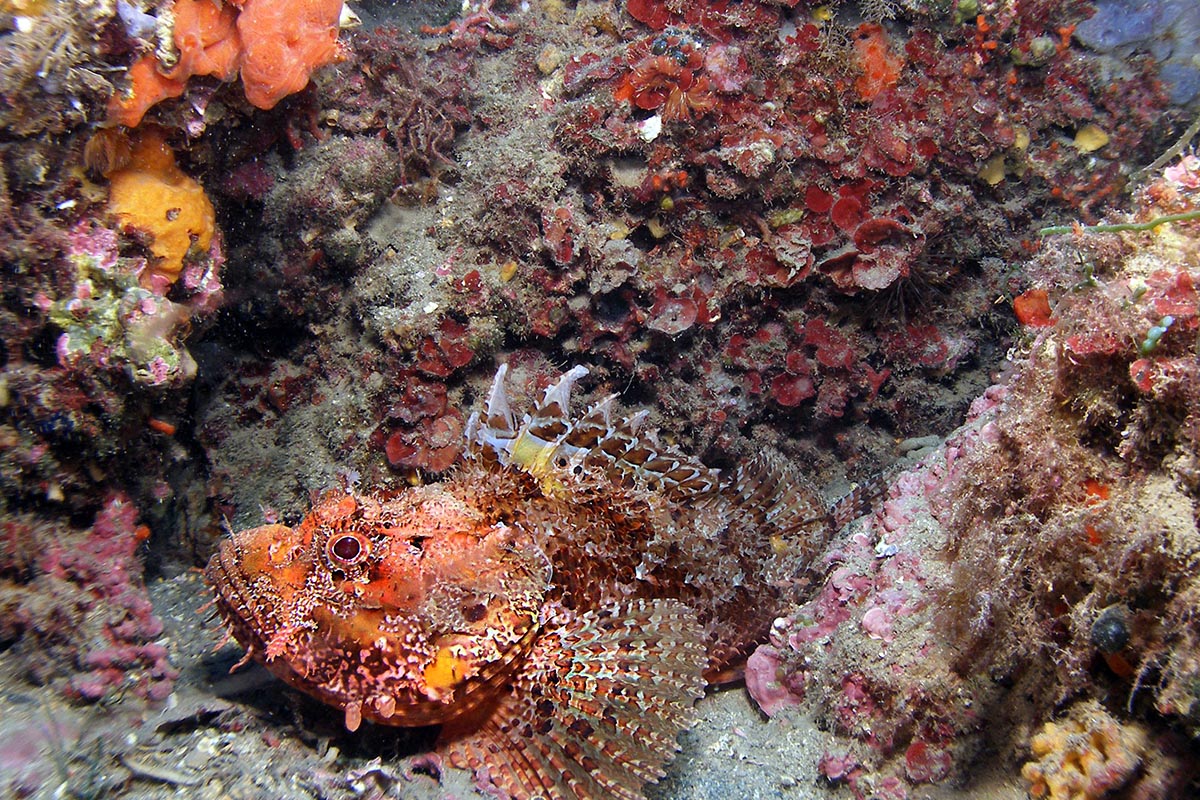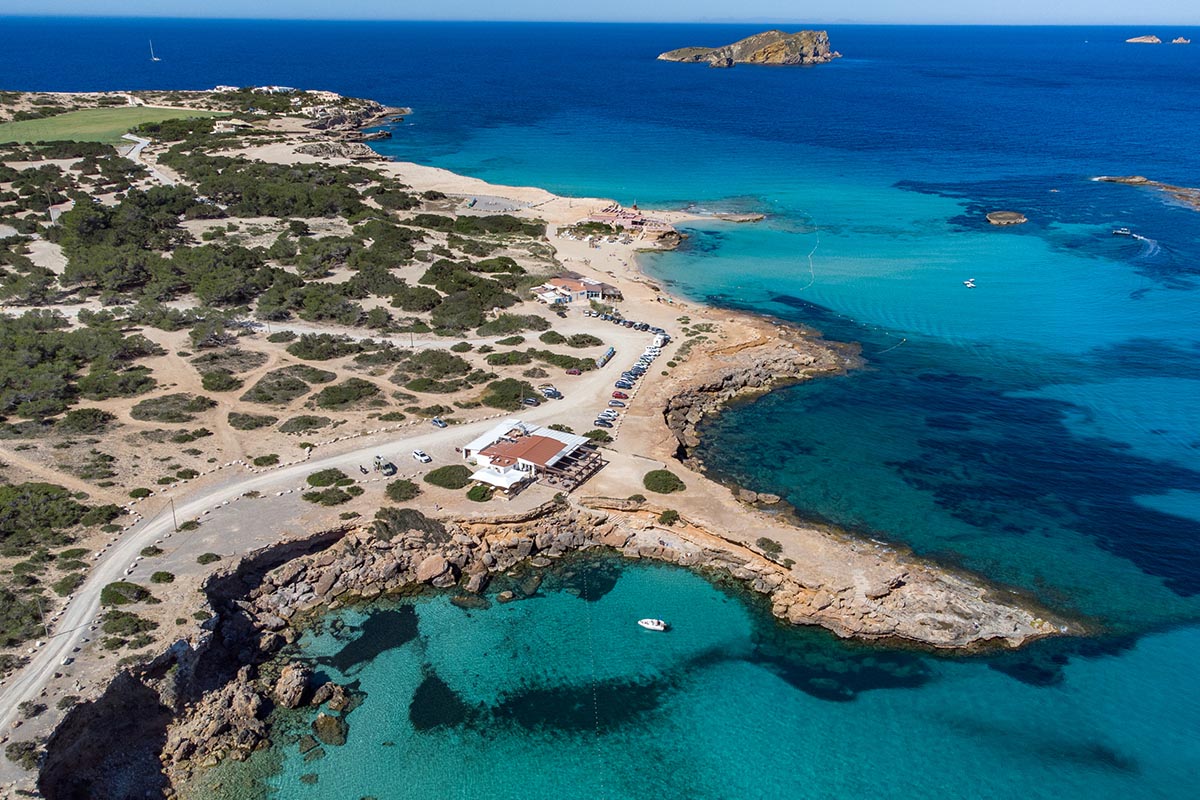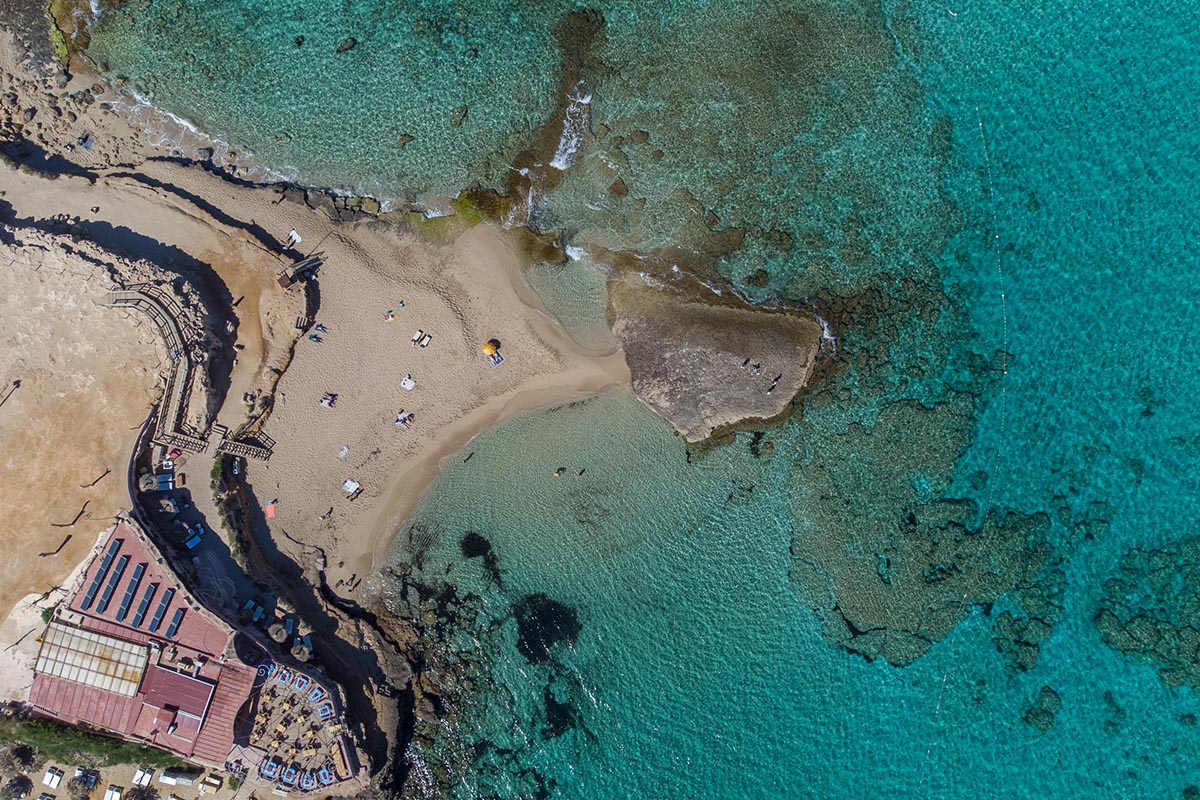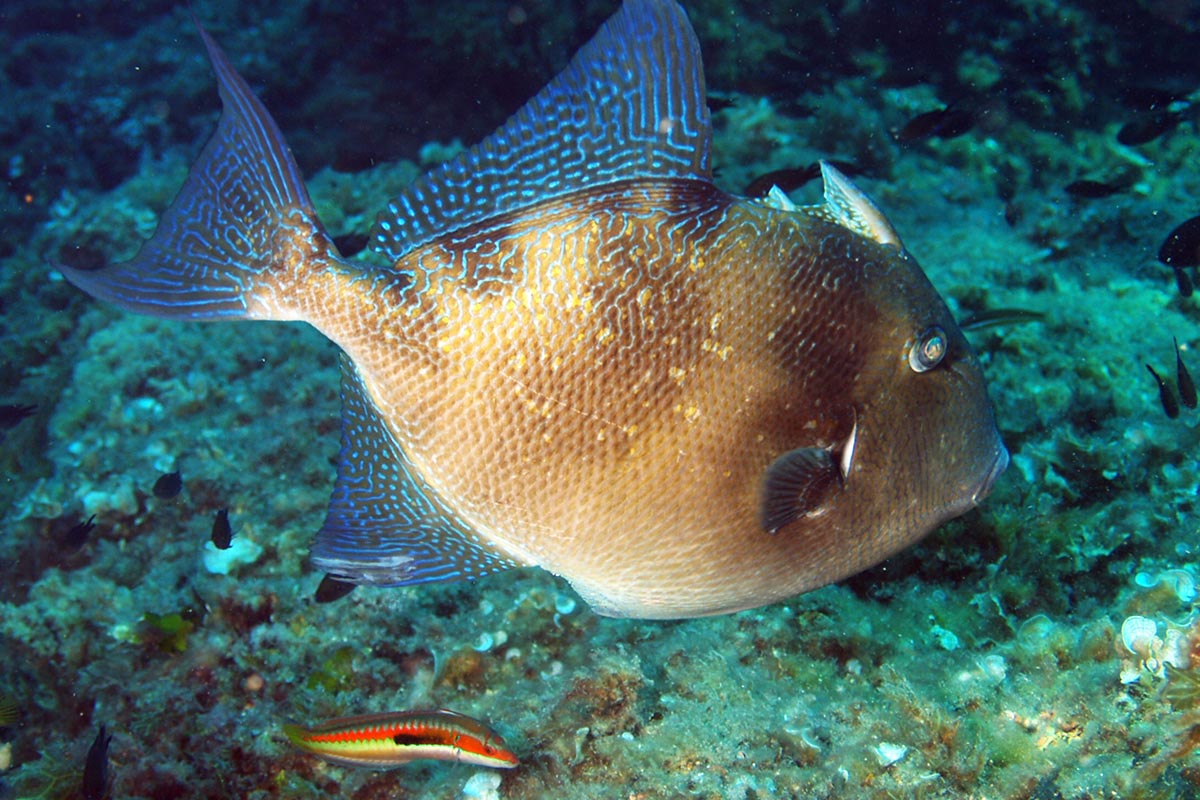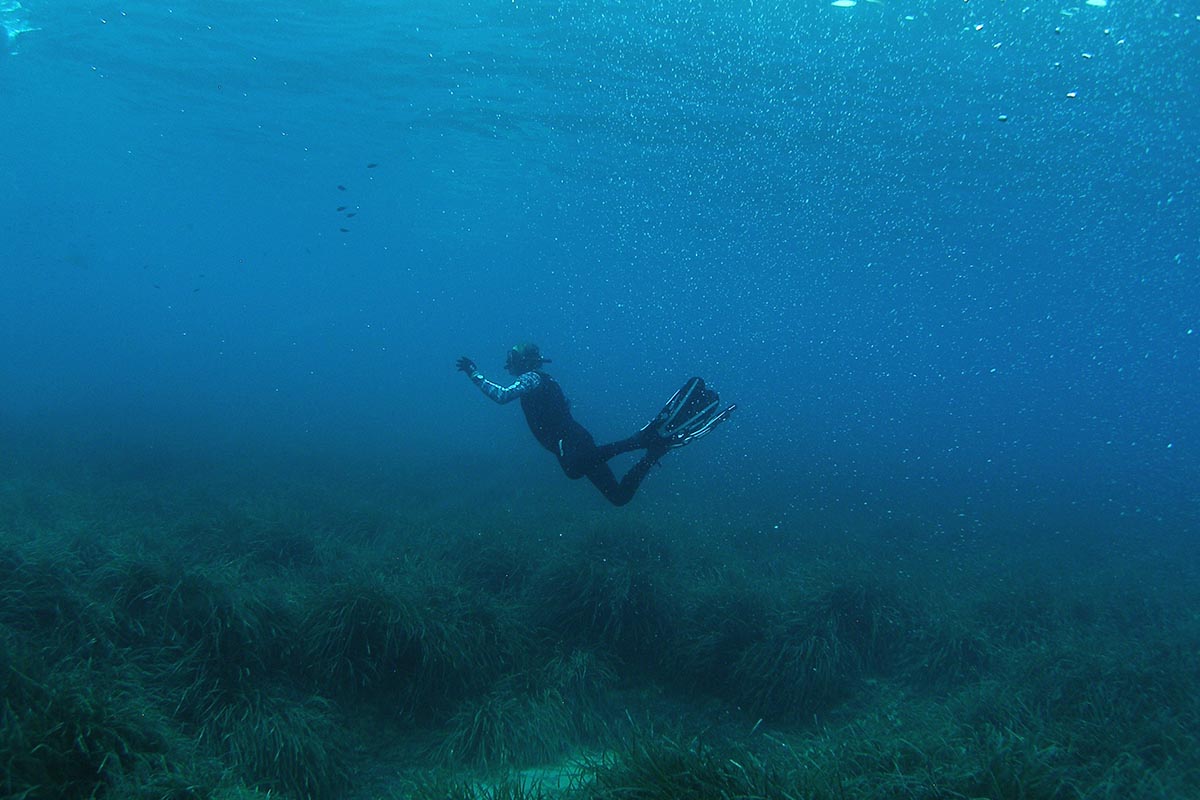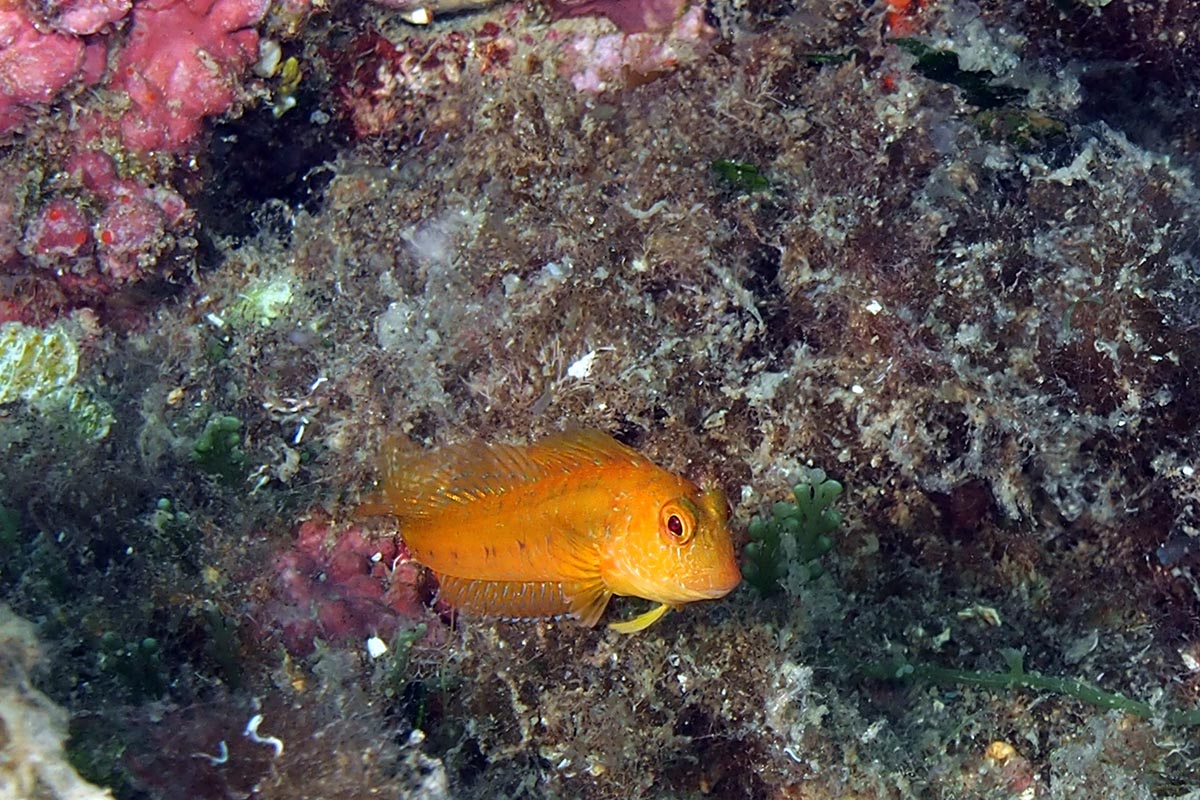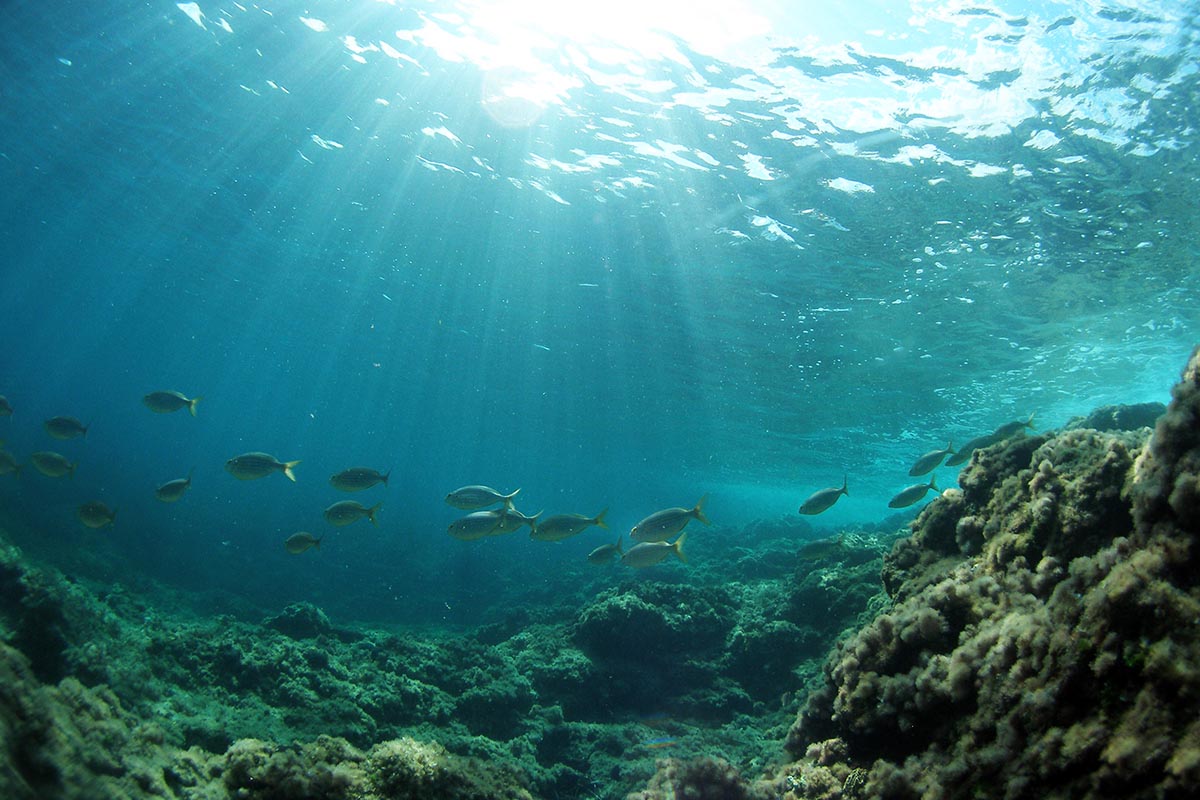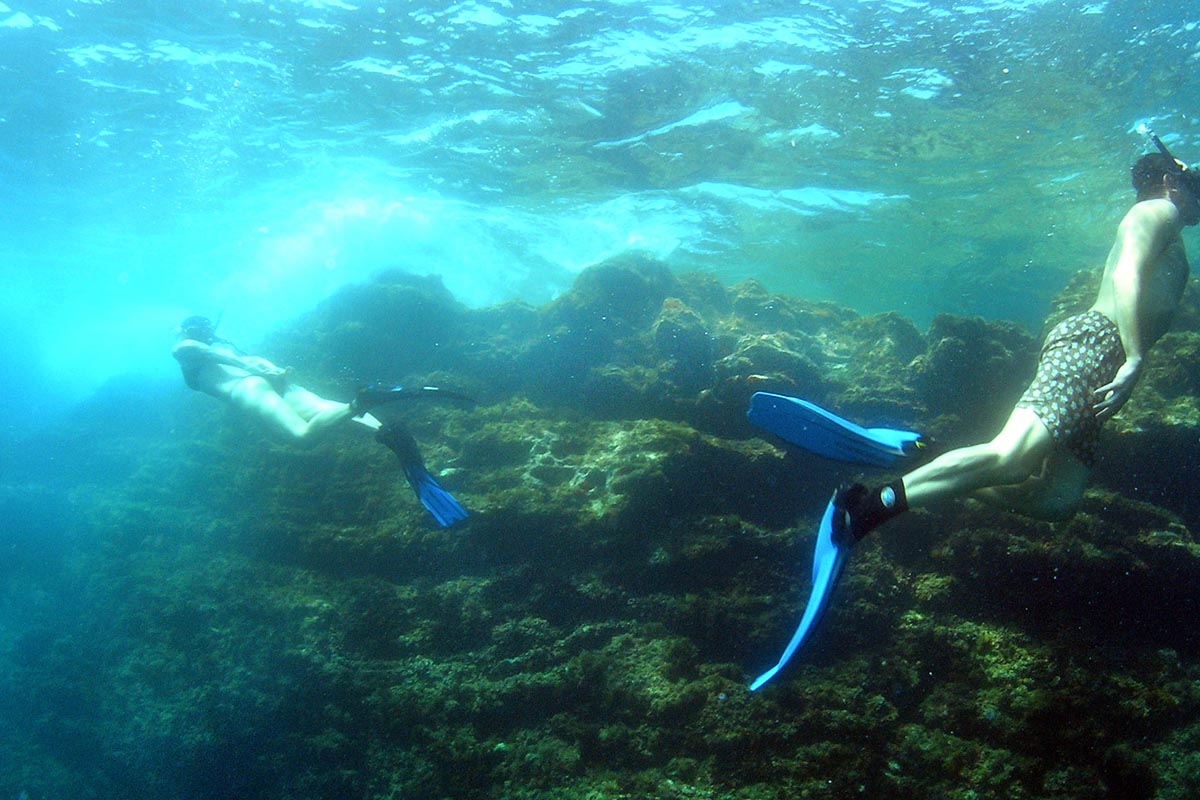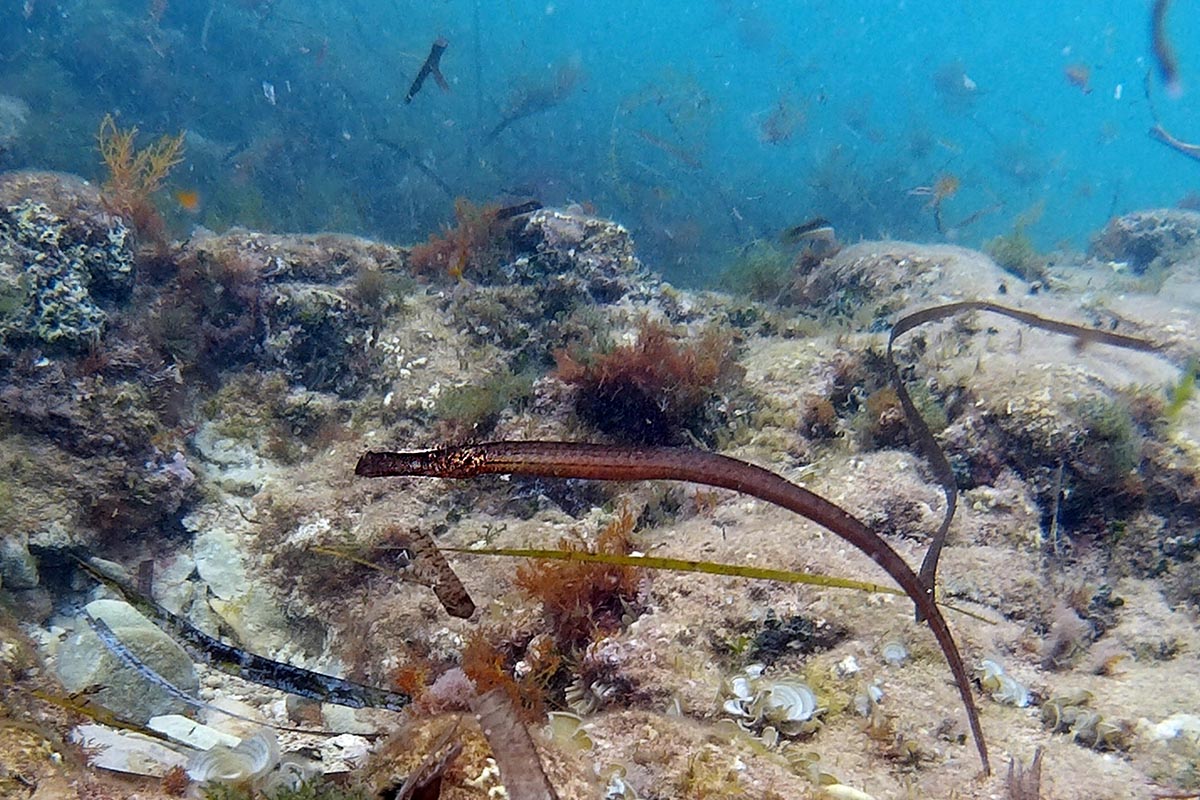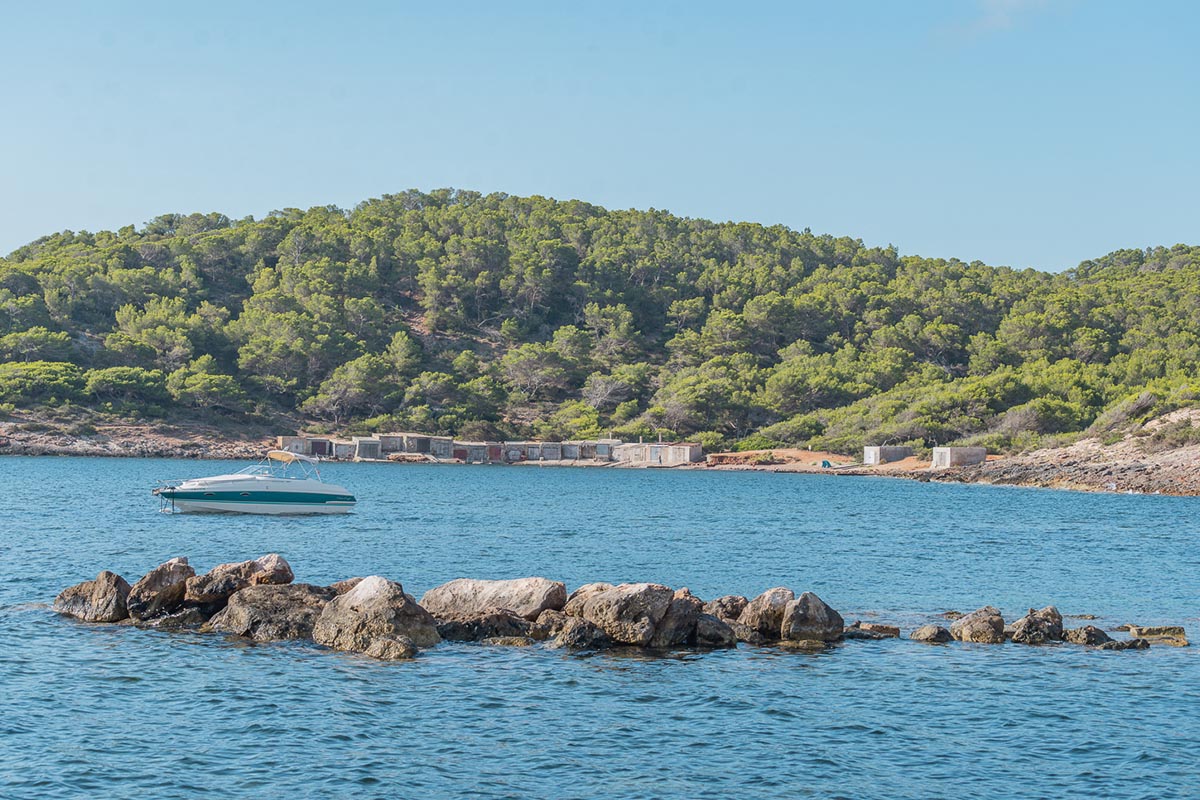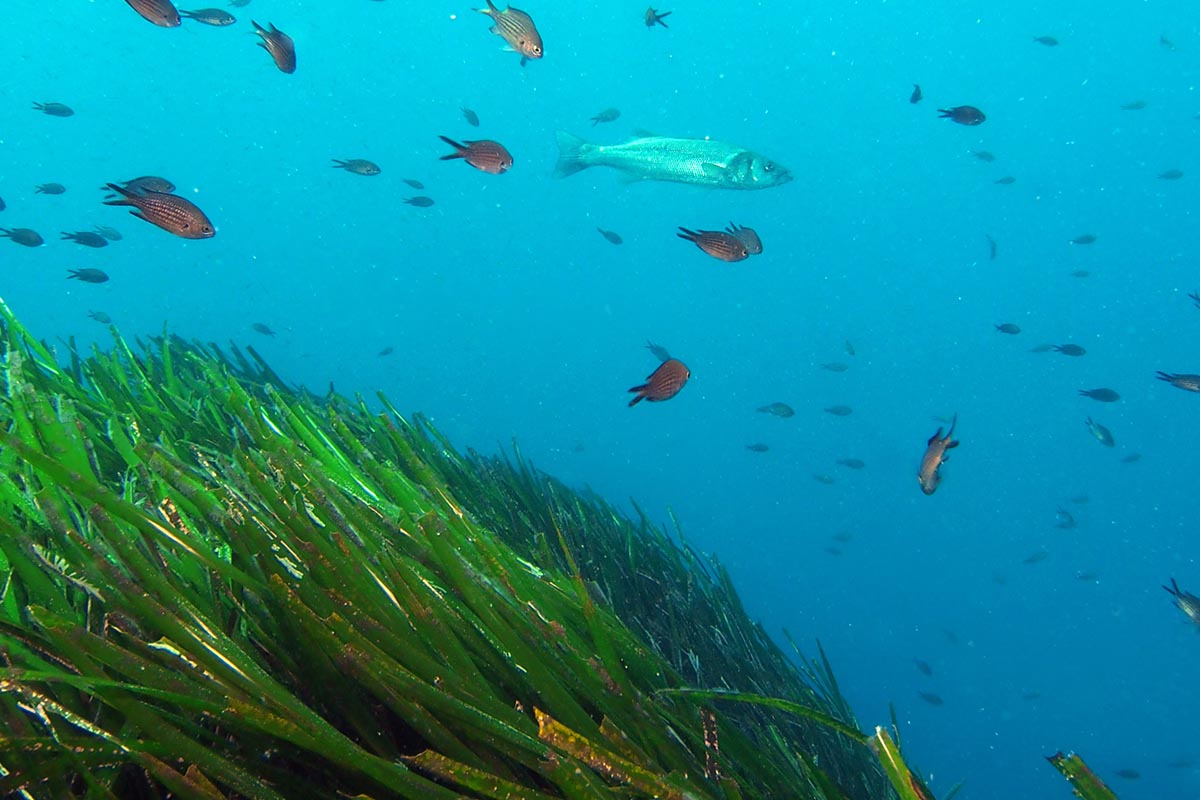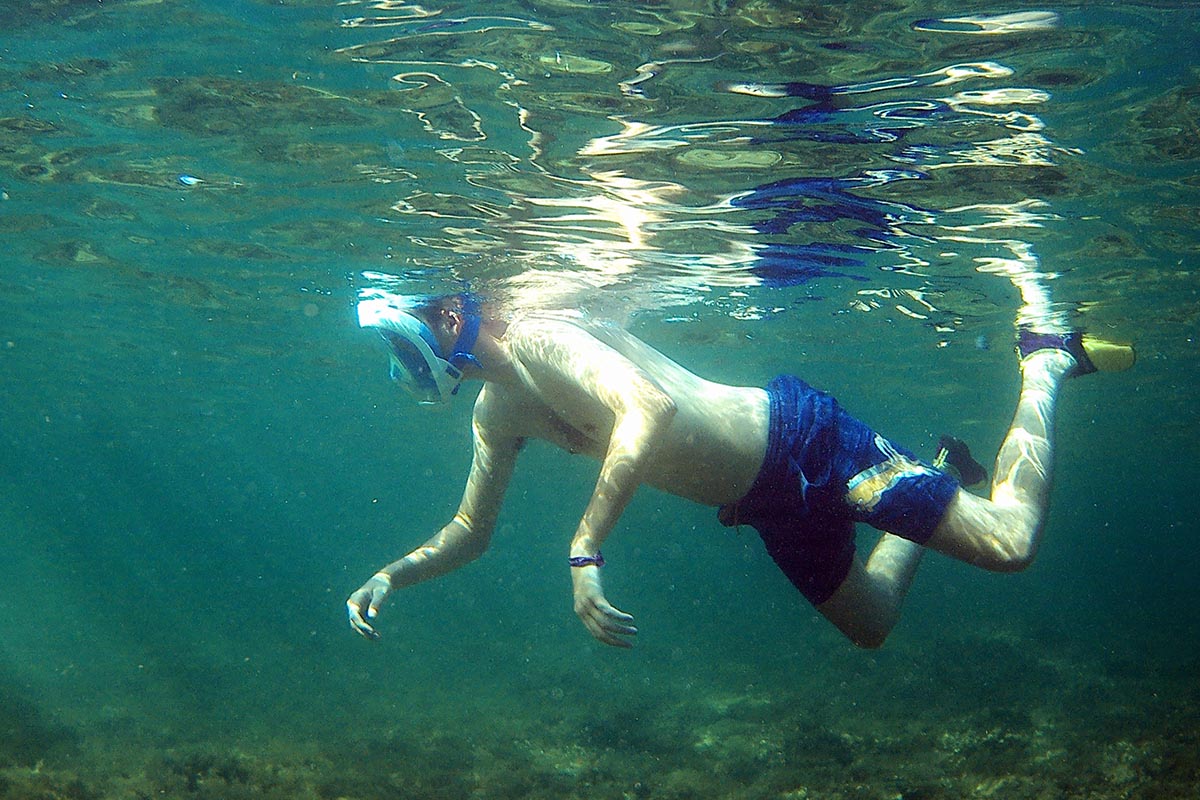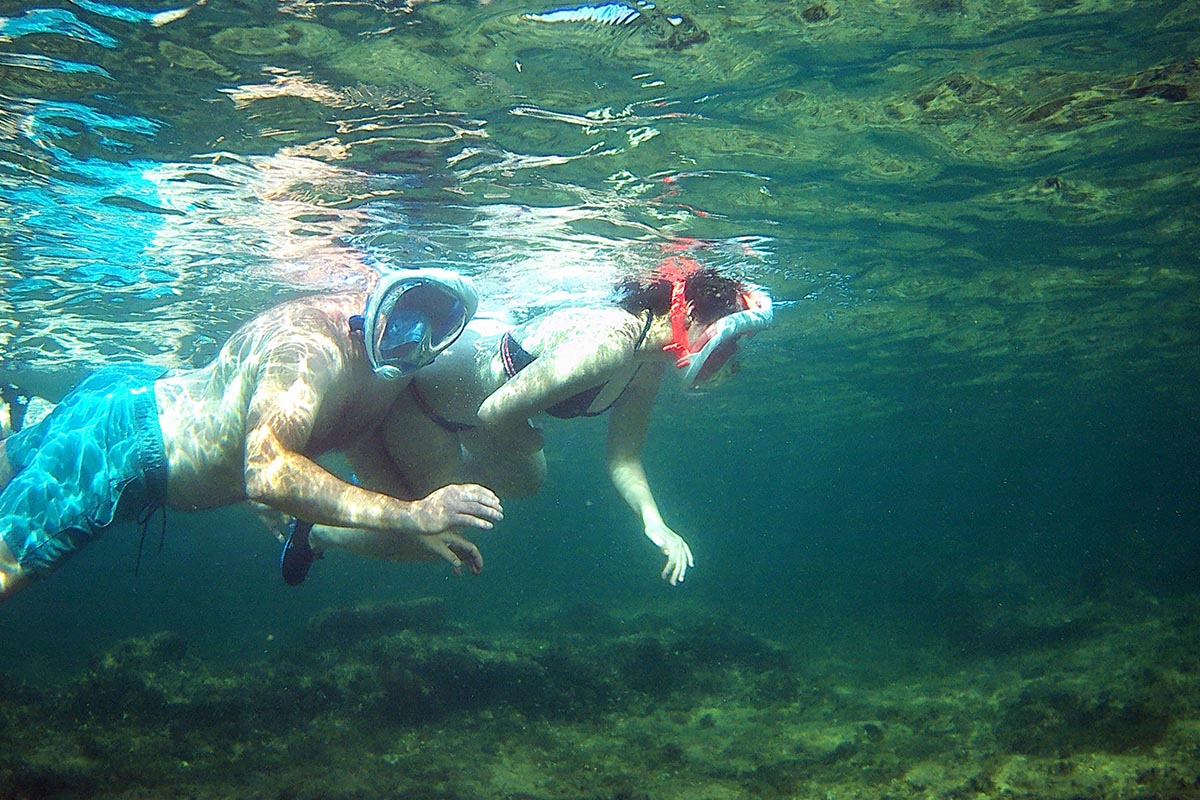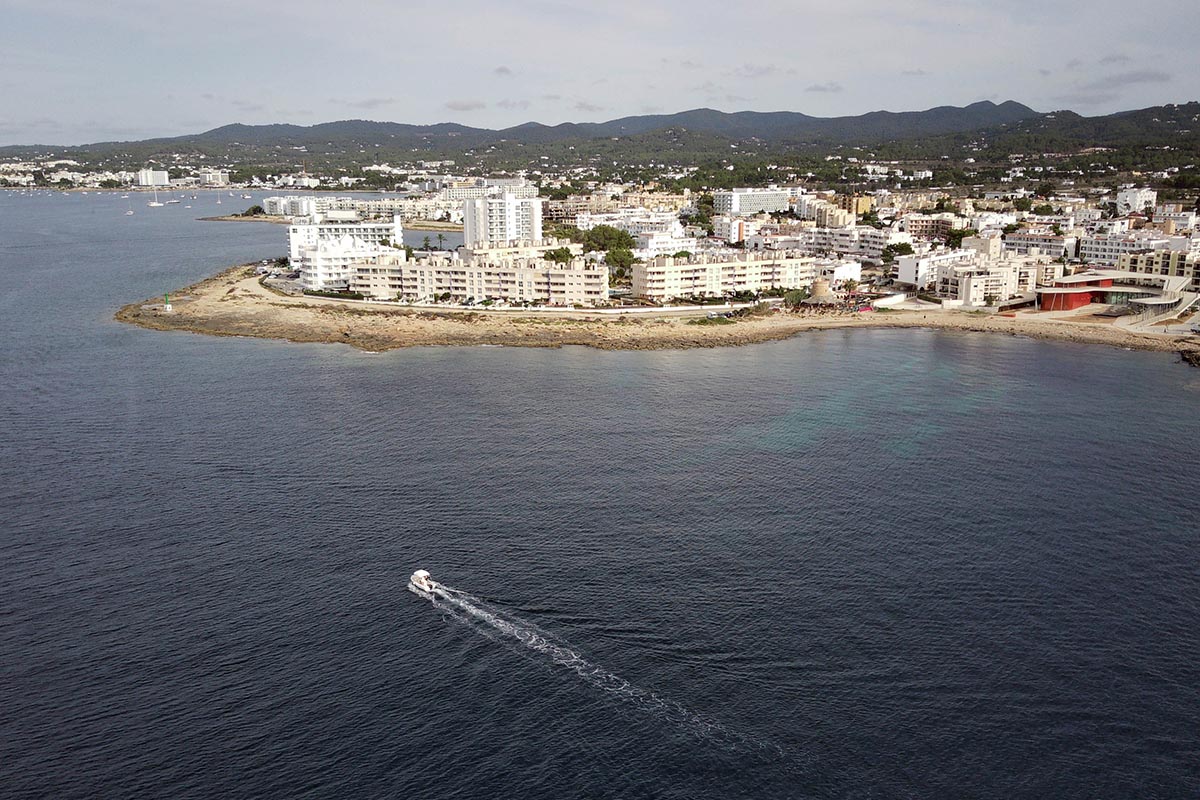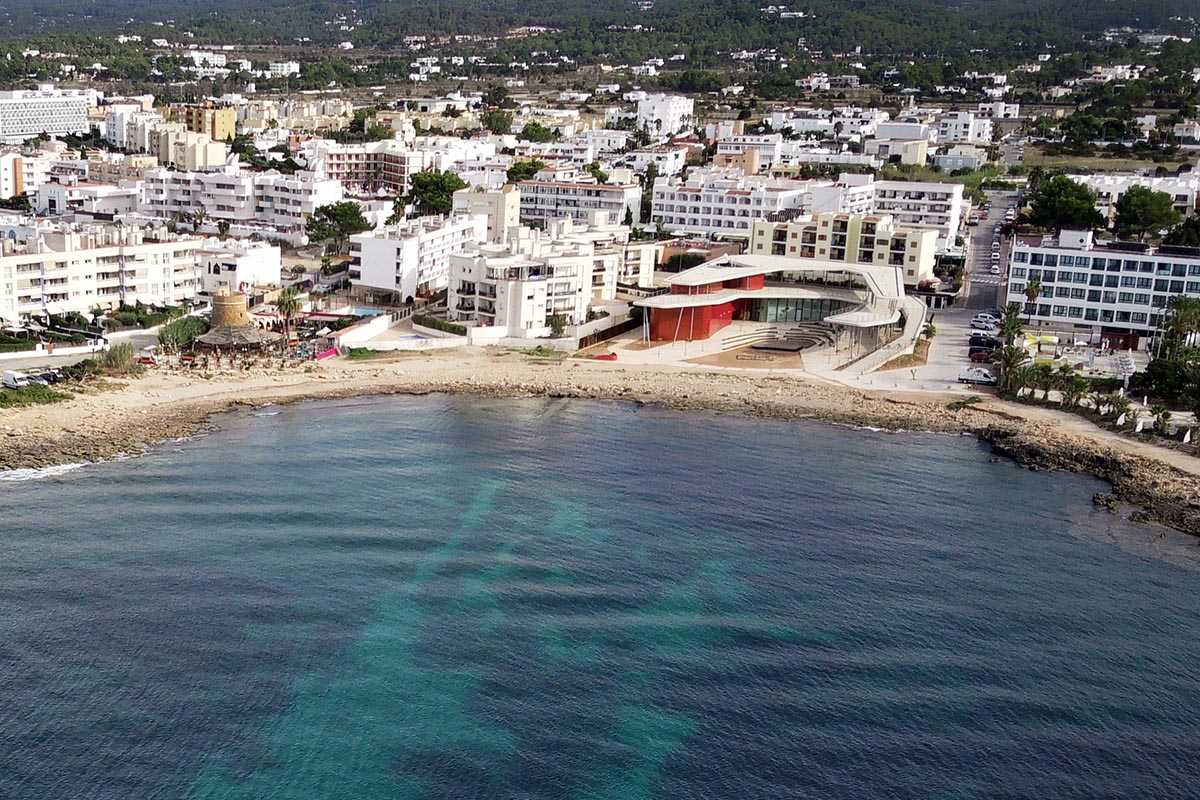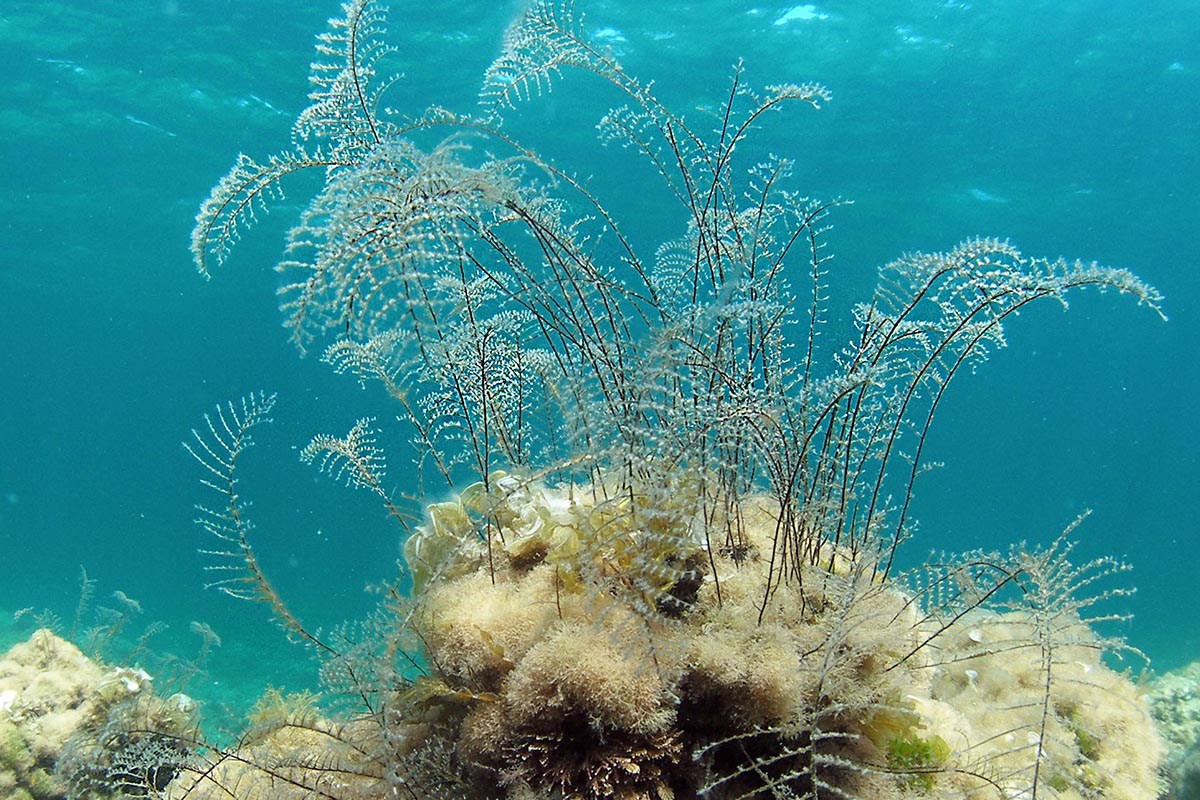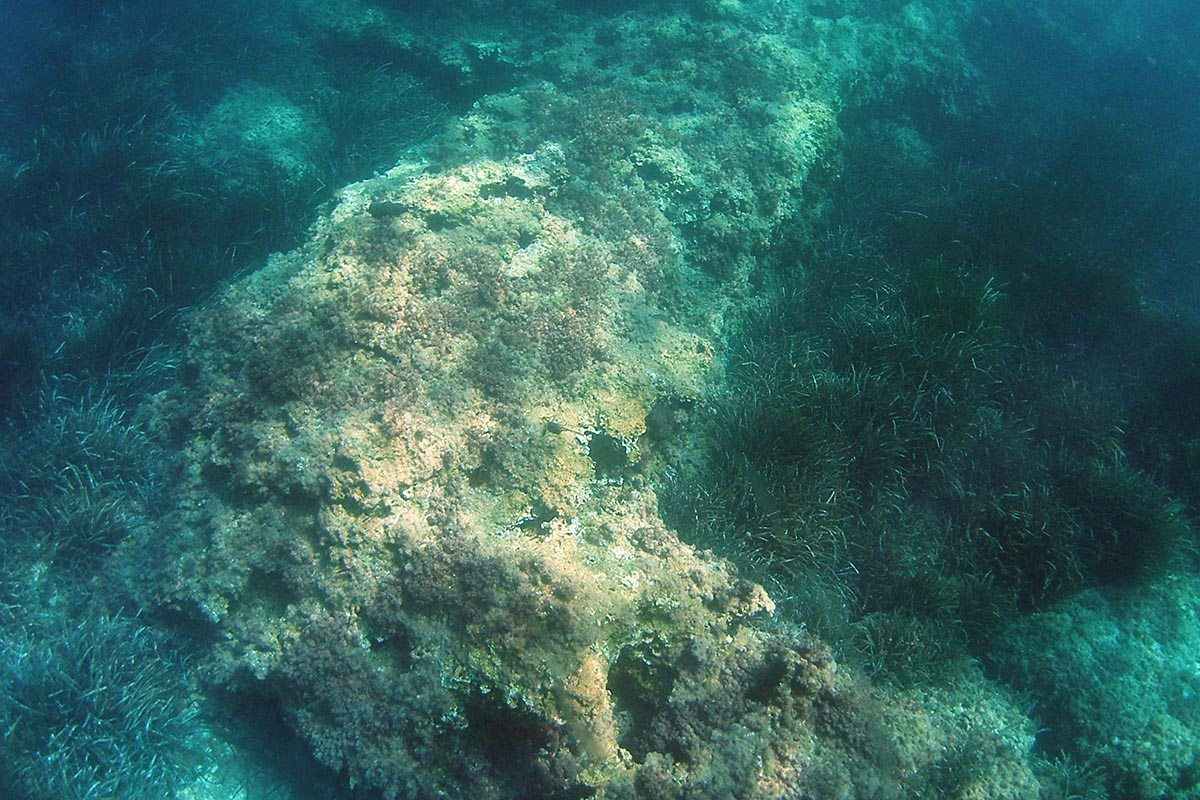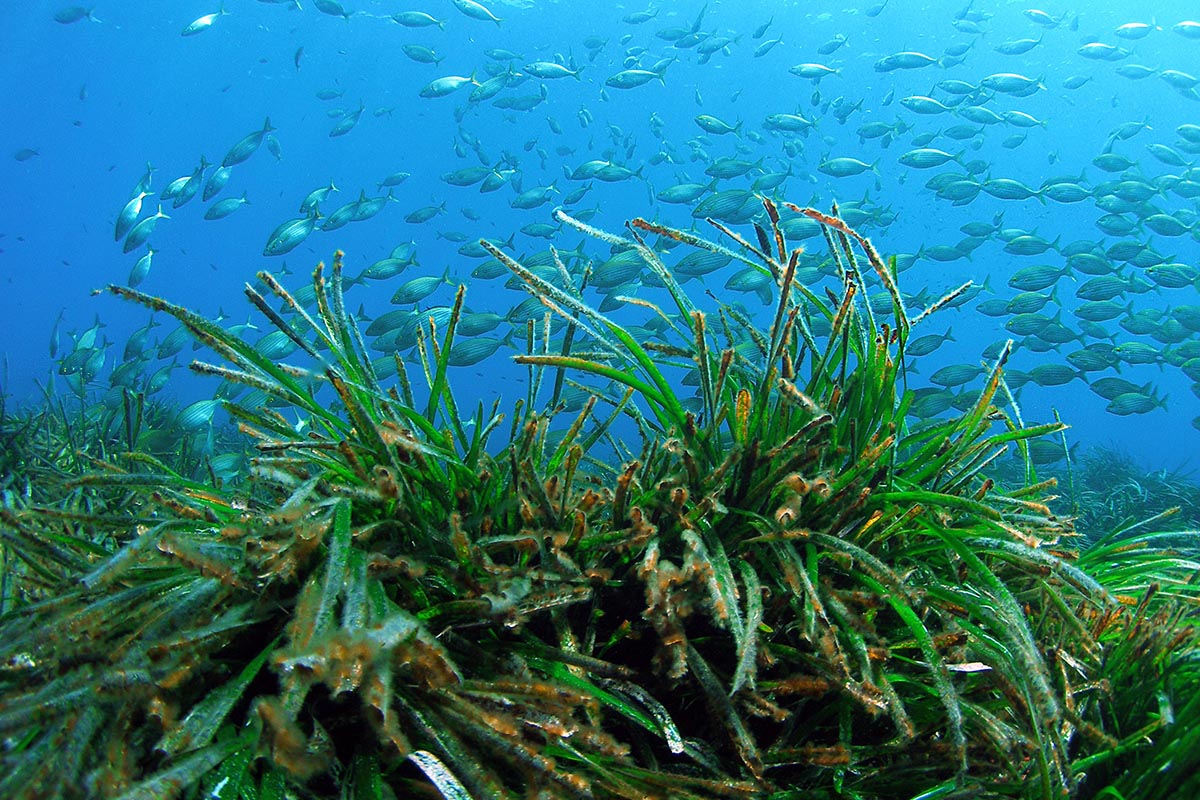
Boathouses, the home of the llaüt (traditional fishing boat)
The beautiful coastline of Sant Josep is lined with remains that tell us about the history of our municipality, the activities of its inhabitants, its customs and its culture. One of the most characteristic and easily identifiable features are the boathouses. These constructions can be found in countless nooks and crannies of the coast and represent the seafaring lifestyle that has been an essential part of the island’s identity.
Origins of the boathouses
The origins of the boathouses go back a long time since there is evidence of fishing activity in Phoenician times. This is the case of the settlement of the so-called Sa Caleta peninsula in which ancient remains of a possible boathouse have been found, most probably linked to the fishing activities that are believed to have taken place in the Phoenician port 2,000 years ago. The age of today’s boathouses can vary greatly, as they are exposed to storms and have to be reconditioned from time to time. Even so, some of them are over half a century old.
As far as the jetty is concerned, historically, the most widely used wood was juniper, due to its extraordinary hardness and resistance to rotting. Exposure to salt water also gave it added solidity to the point that it offered even greater durability than other industrial-type materials, initially considered more reliable. Moreover, the juniper wood did not damage the hull of the llaüts when loading and unloading and was abundant on the island. Today, this tree is a protected species so other more abundant and prolific types of wood are used.
Function of the boathouses
The main purpose of the boathouses was originally to offer protection to the fishing boats which, historically, have been in the form of the so-called llaüt, the traditional fishing boat of the Balearic Islands and by extension, of the Pitiusas. Many attribute their origin and design to vessels from ancient Egypt. With a robust wooden construction and quite symmetrical profiles, the llaüts were an essential means of life that had to be taken care of and properly maintained, so they could not be left at the mercy of the sea. The characteristics of the Sant Josep coast, full of hidden coves often enclosed by rock or clay cliffs, forced its inhabitants to build their own embarkation and disembarkation point in the form of a jetty made of juniper wood, and to ensure minimum protection against storms and wave action. The original building material was mainly mud mortar, stone, wood and clay for the roofs. In modern times it became more practical to use breezeblocks and cement as building materials, these being stronger and requiring less maintenance.
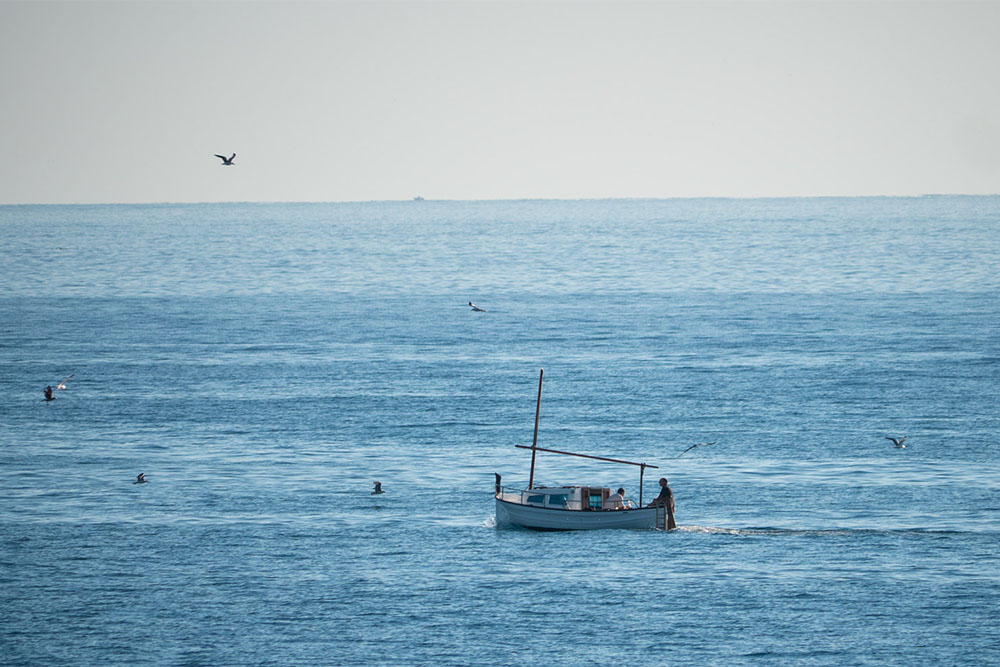
Llaüt (traditional fishing boat)
The unique style of the boathouses has been one of the most characteristic features of our coastline. Immortalised in countless ways, the fishermen’s huts have become an essential part of the tourist attraction of Sant Josep. In their surroundings many visitors find the peace and tranquillity that comes from contemplating a building that represents one of the most Mediterranean ways of life, in quiet spots far from the summer hustle and bustle. In fact, the existence of the boathouses has permitted the enjoyment of unusual locations on the coast that would otherwise be inaccessible to foreign visitors. In the shade of their traditional cane and juniper roofs, what was once a refuge to protect a means of life has become a meeting place for families and friends, a focal point for the enjoyment of a bullit or a guisat de peix, seafood dishes par excellence, fruits of the day’s fishing.
In this way, the boathouses have become living features that, having originally been used for fishing purposes, have evolved towards a more recreational and social use.

Boathouses at Es Cavallet – Ibiza
Many curiosities have arisen within the walls of these coastal constructions, often associated with the harsh living conditions of the past. Some people talk about the poaching and tobacco smuggling activities that took place in times when this was the only way of subsisting and raising a family. Fishing did not always provide sufficient resources and many saw the discrete location of the boathouses as the ideal place to trade and make an economic profit to support the needs of the family unit. Today, fortunately, things are different, and the day’s main priority is to know whether the sea conditions are good enough to enjoy a day of recreational fishing in the company of friends or family.
Plan of care and maintenance of the boathouses
The boathouses are usually grouped in the coves with easier access for boats, while in areas with more difficult terrain they tend to be fewer and further between. There are several examples of the first case in the municipality of Sant Josep, such as those in Sa Caleta, mentioned above, or those in the Porroig cove, which offers natural protection nearly all year round. Some of these groups have been recognised by the authorities as Sites of Cultural Interest and have specific regulations for their care and maintenance.
As they are buildings where a traditional activity, i.e. fishing, has taken place throughout history, and they represent a way of life, special protection plans have been designed for the conservation of these constructions. These plans specify the materials that must be used for their maintenance in order to preserve their original characteristics. This, together with the genuine interest of many owners in recovering the essence of the boathouses, has led to a return to the use of stone and wood as basic elements for their rehabilitation.

Boathouses Platges de Comte
Other characteristic boathouse locations are Cala d’Hort, Cala Llentrisca, es Xarco and Platges de Comte, among others. But if you’re an adventure lover, the best thing to do is discover the coast for yourself and venture into any stretch of the Sant Josep coastline; you’re sure to find a picturesque corner with a llaüt beside its juniper jetty, or the walls of an isolated boathouse that will transport you to the true essence of Mediterranean life. Enjoy yourself!

Boathouse – Cala de Bou




